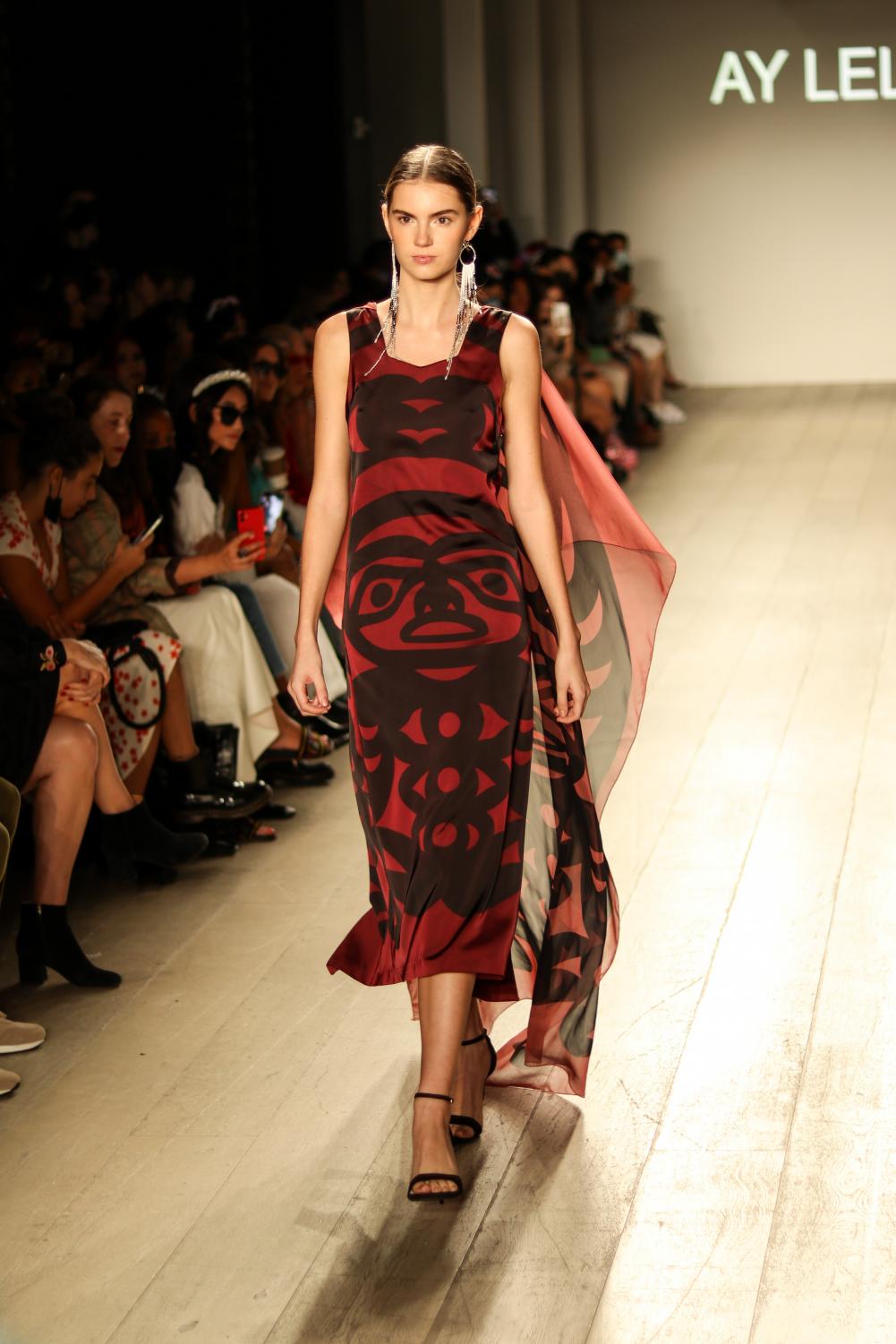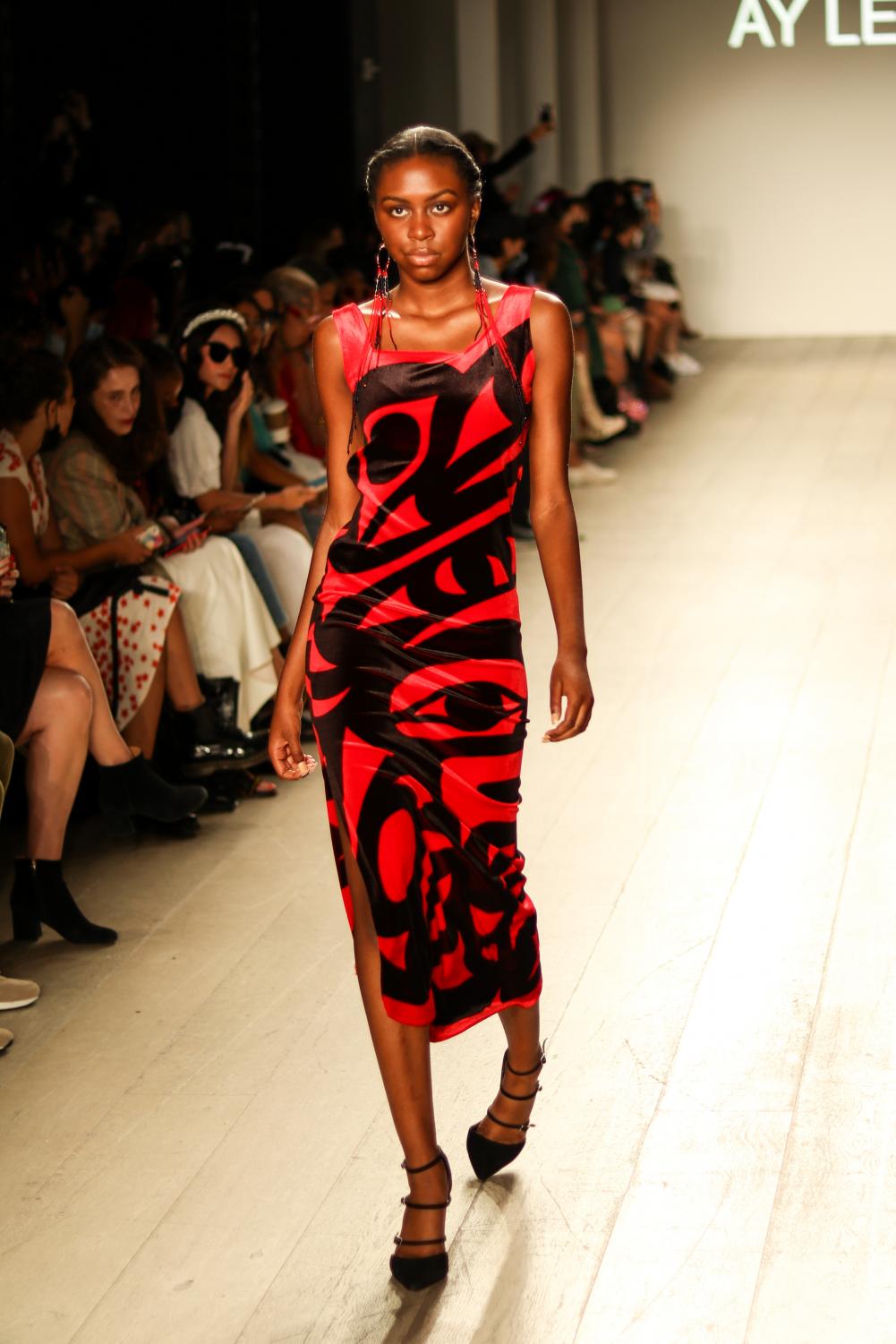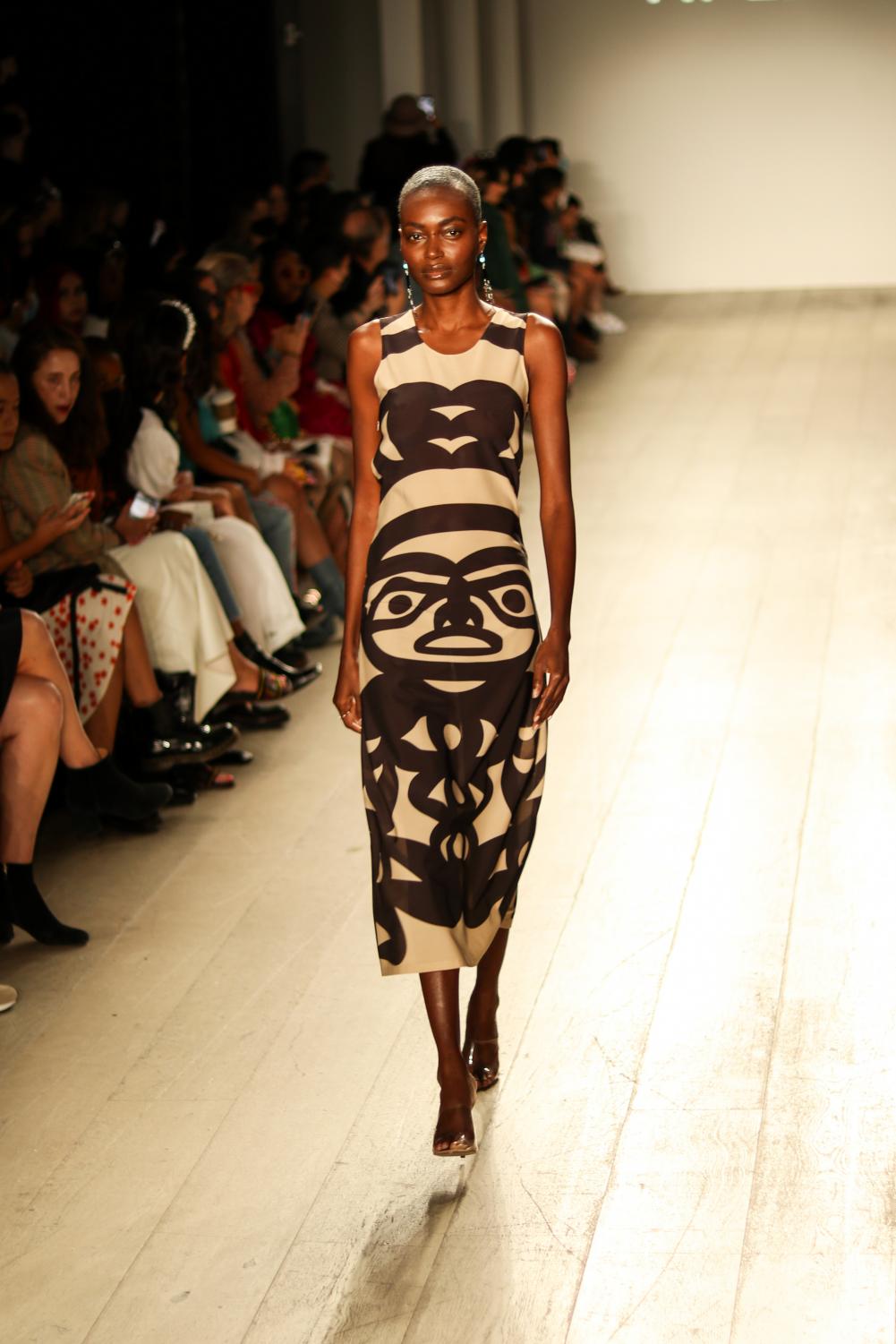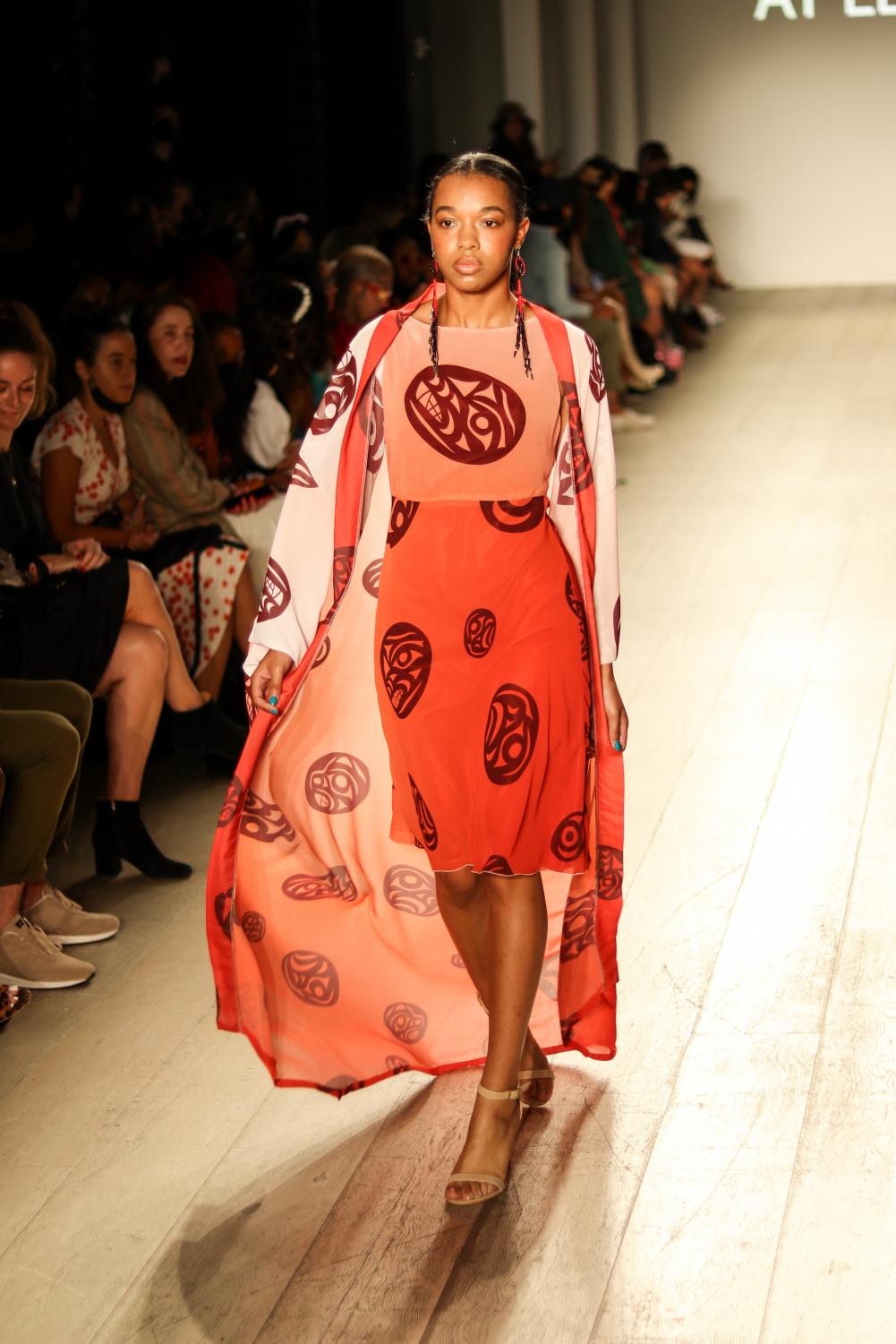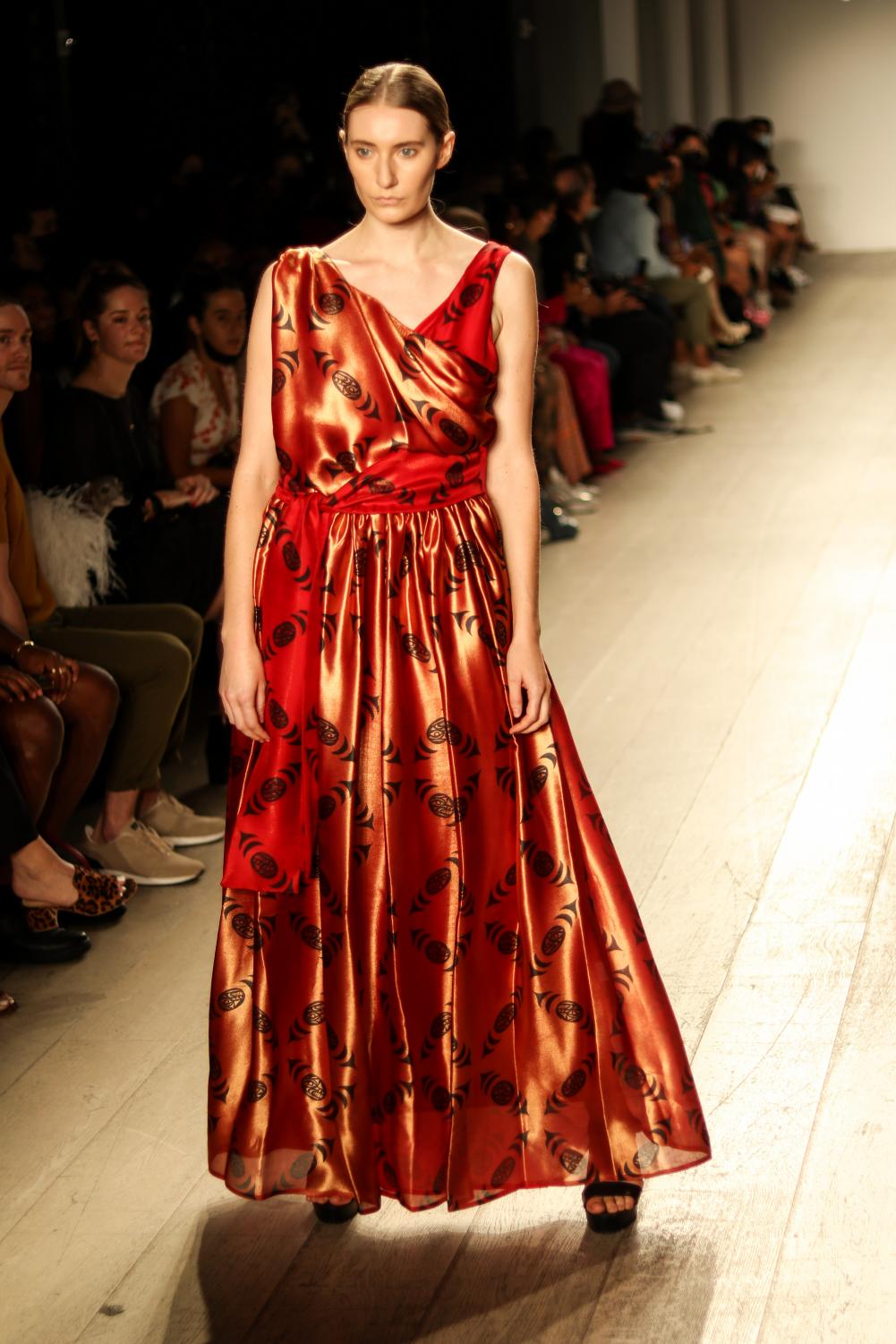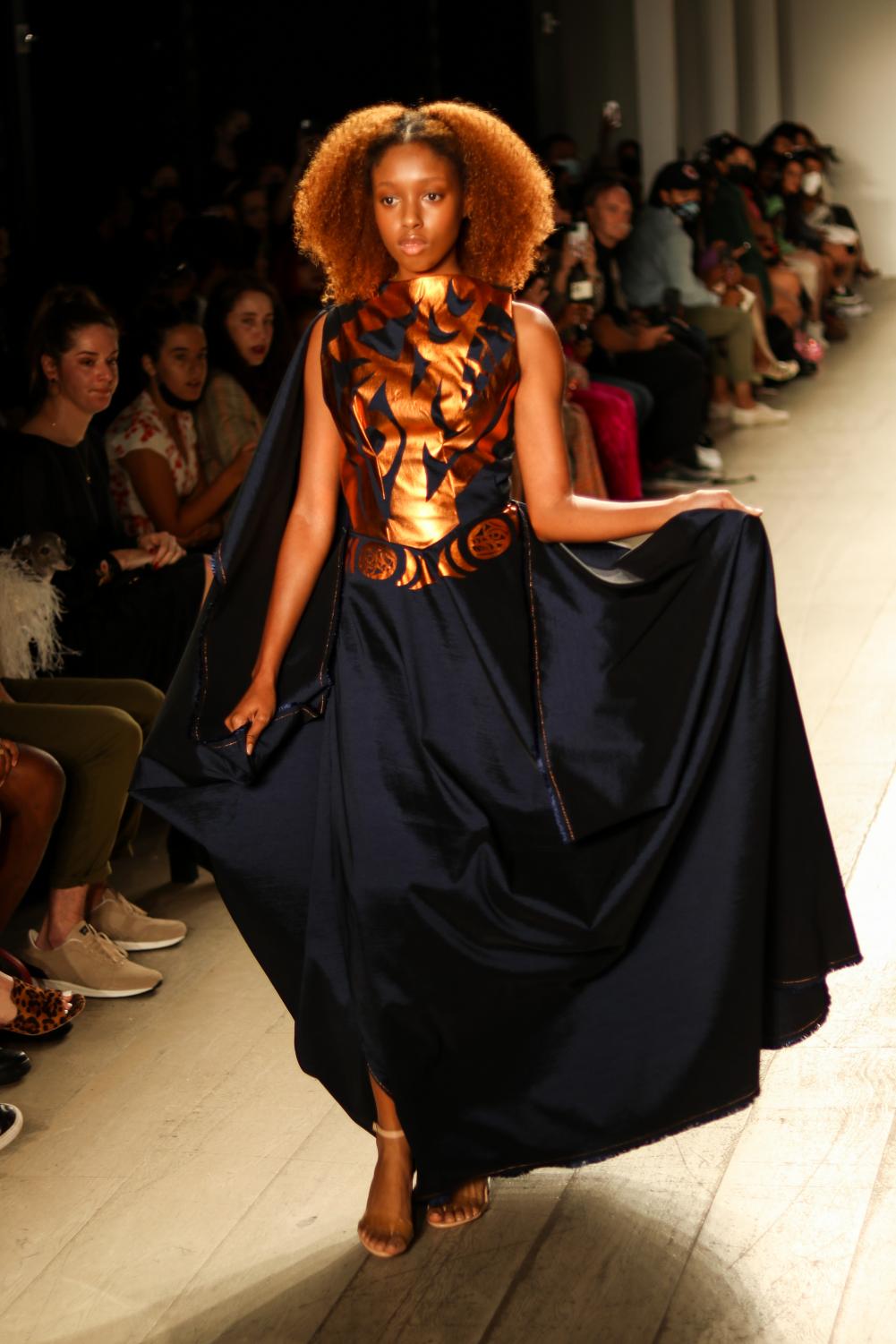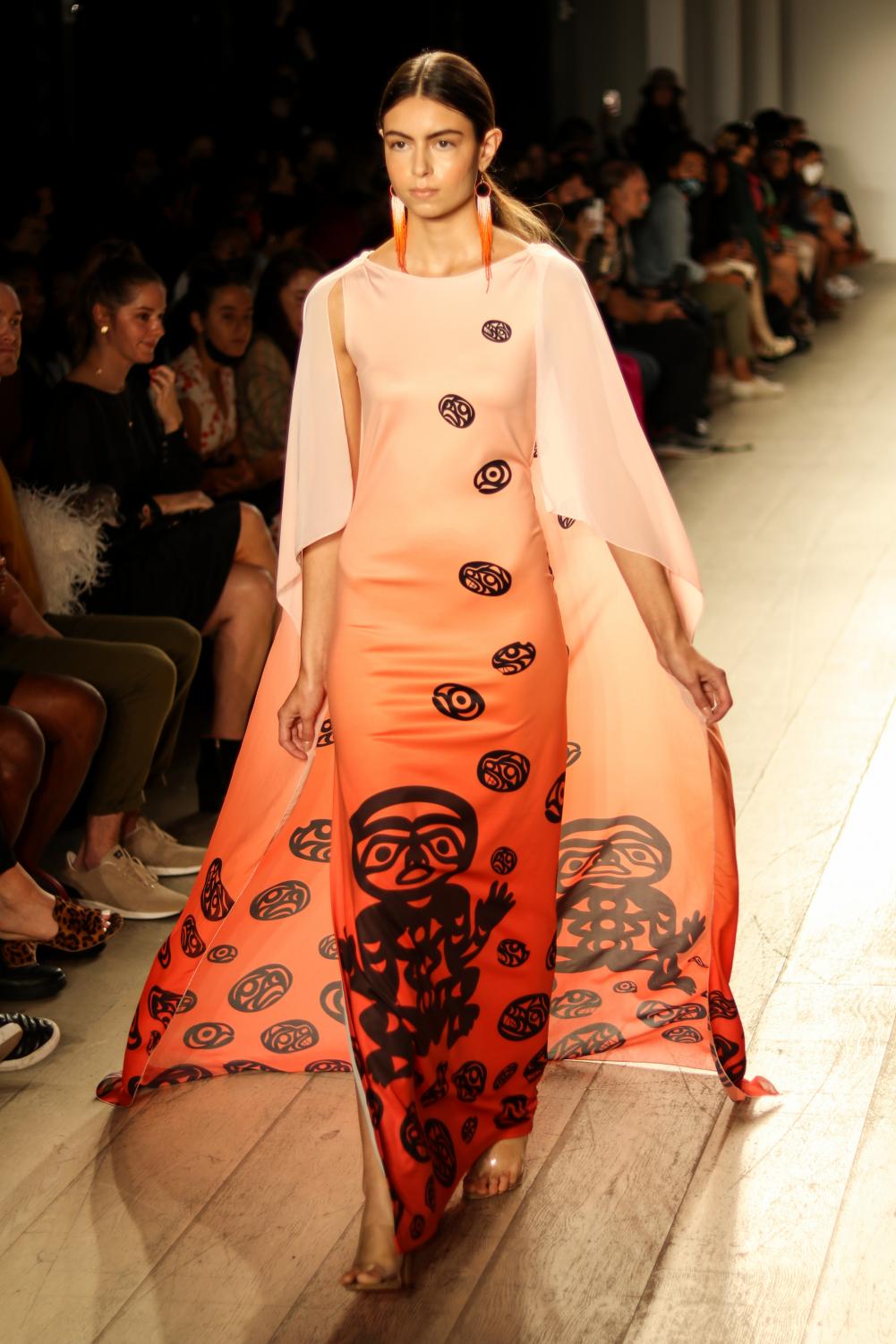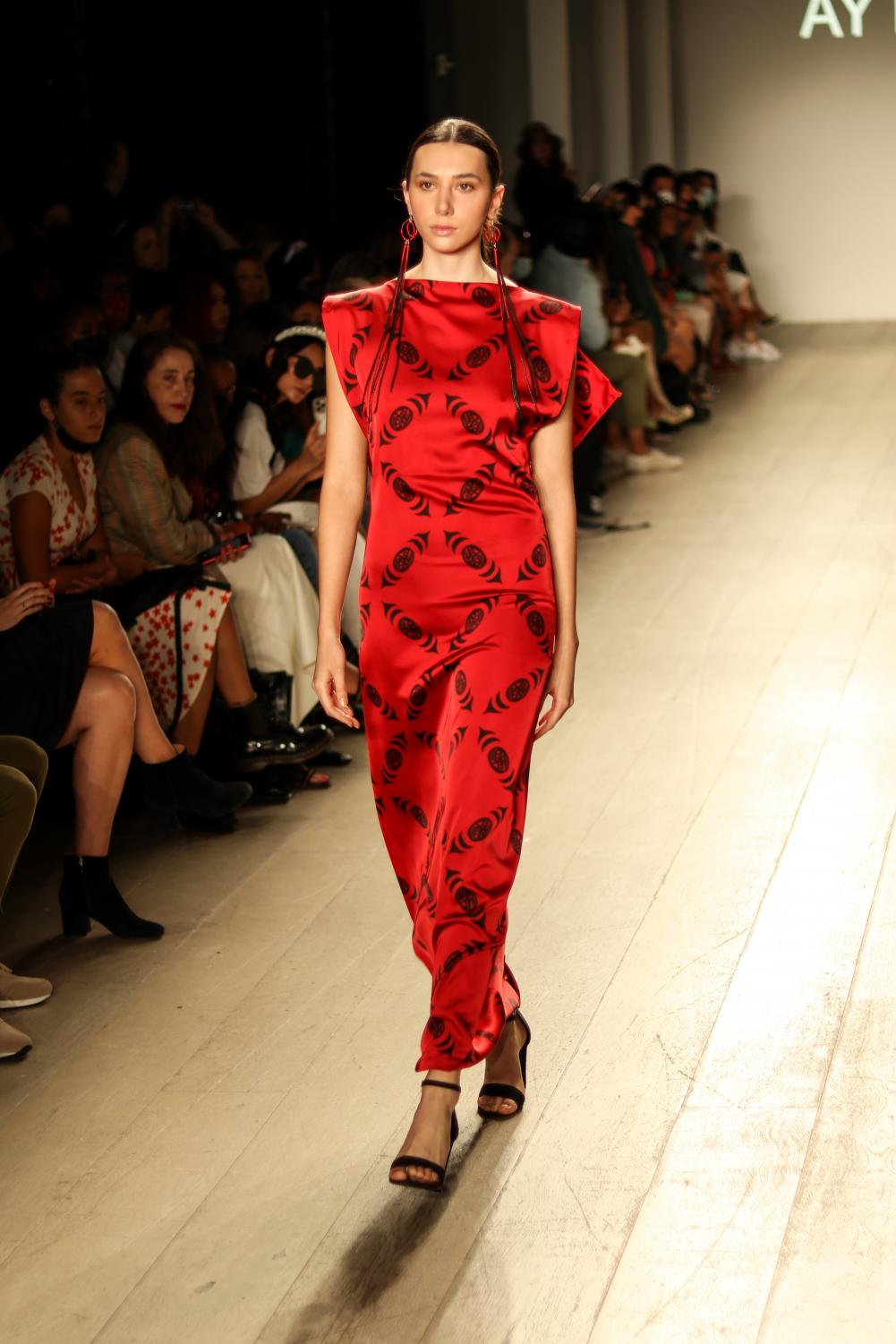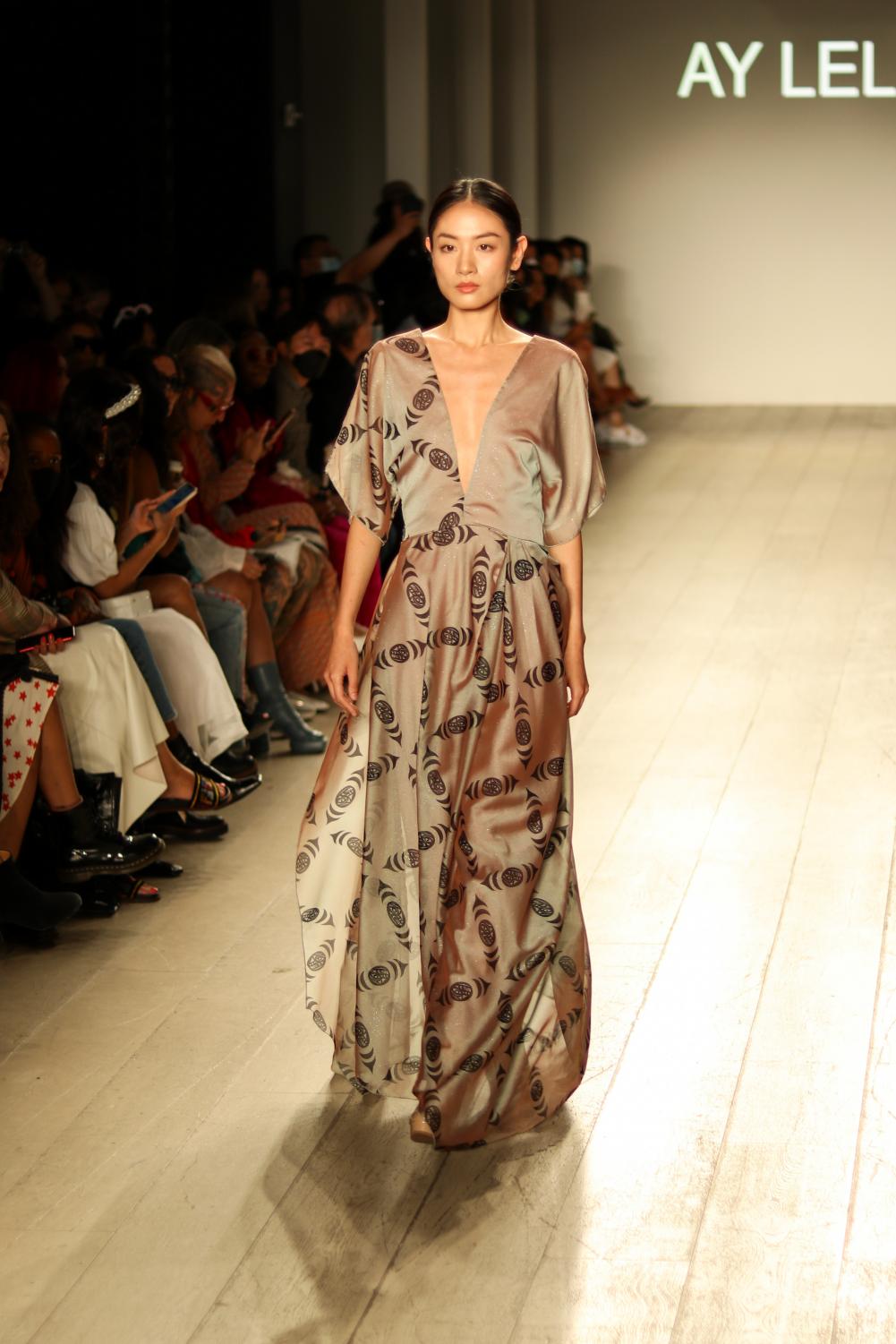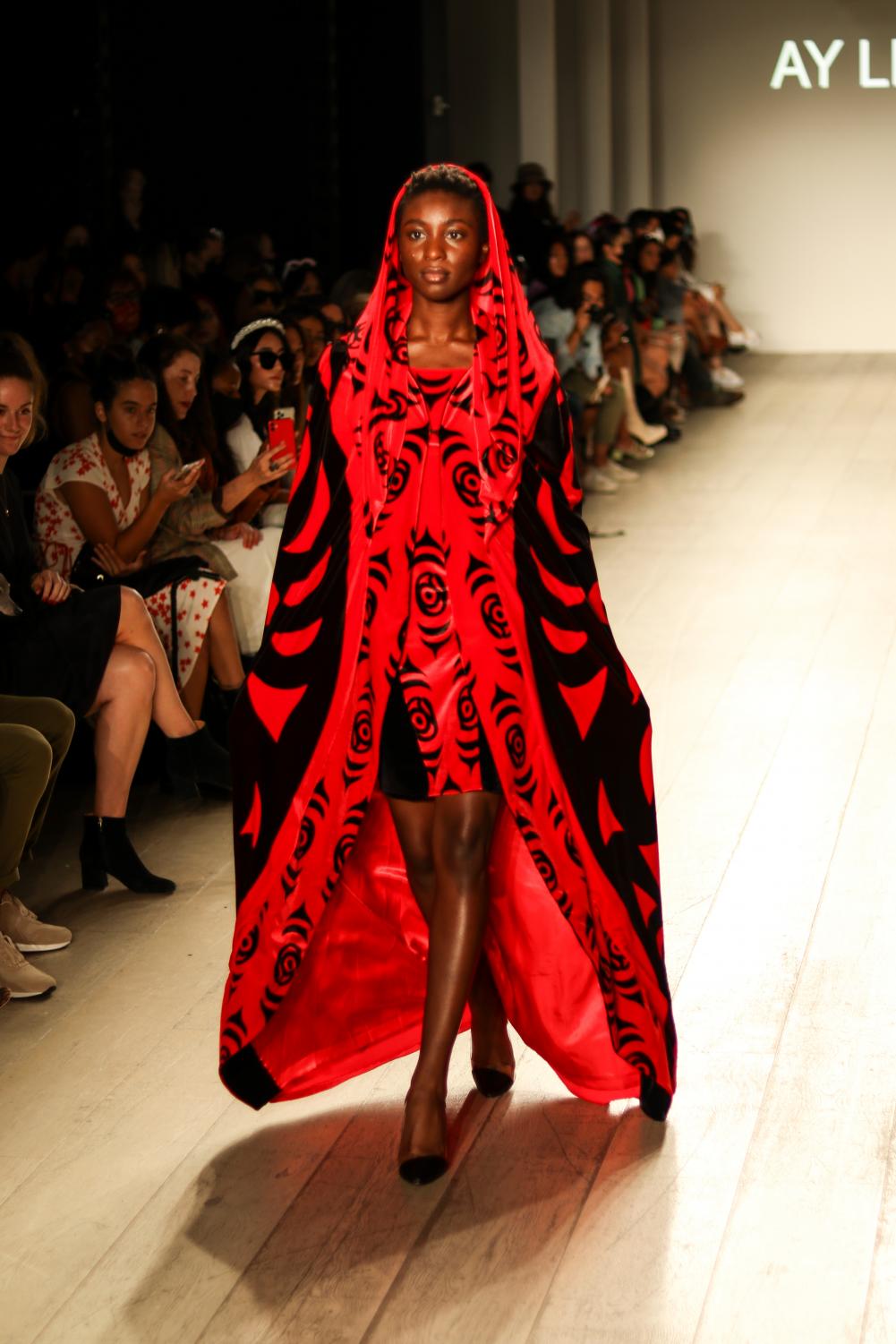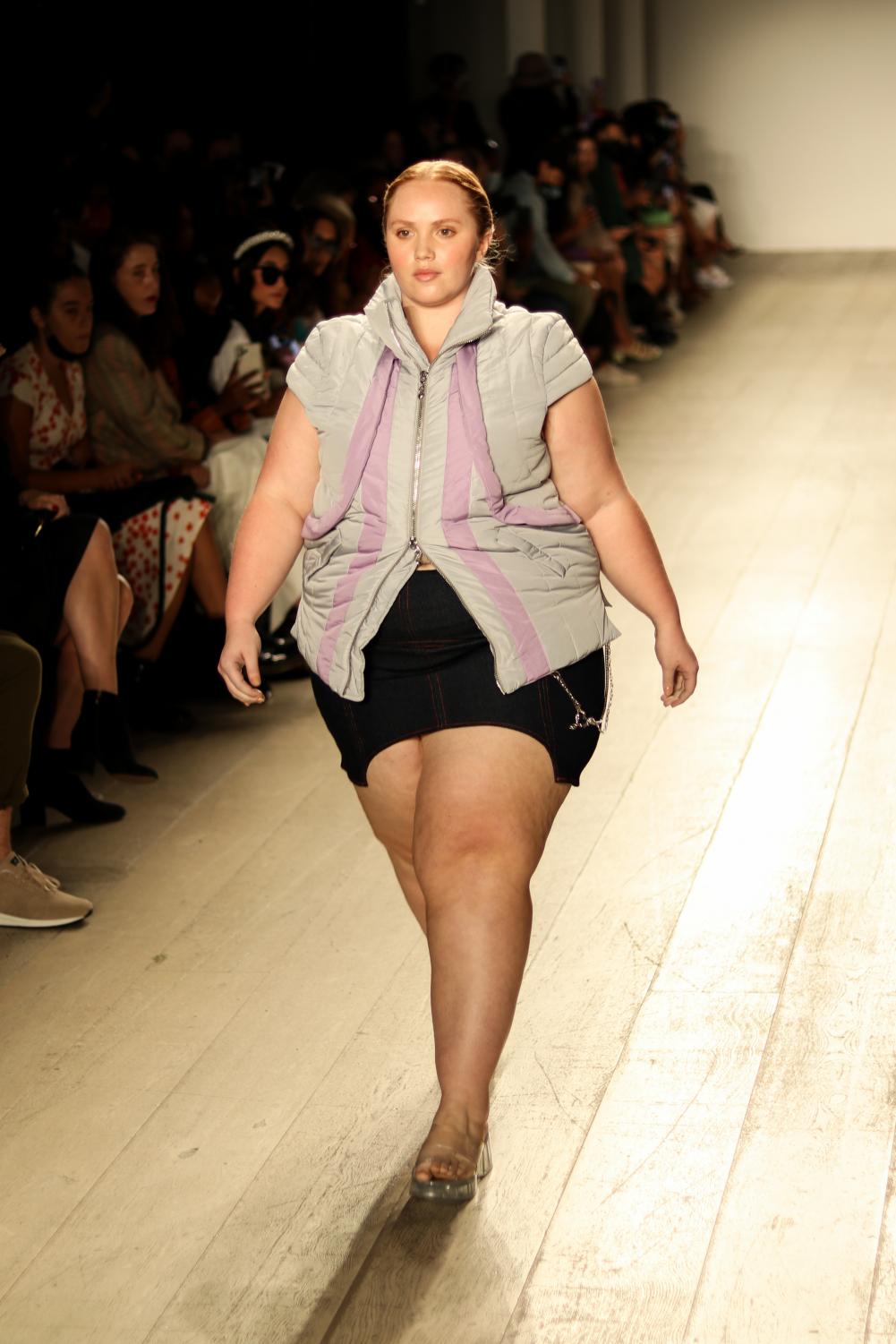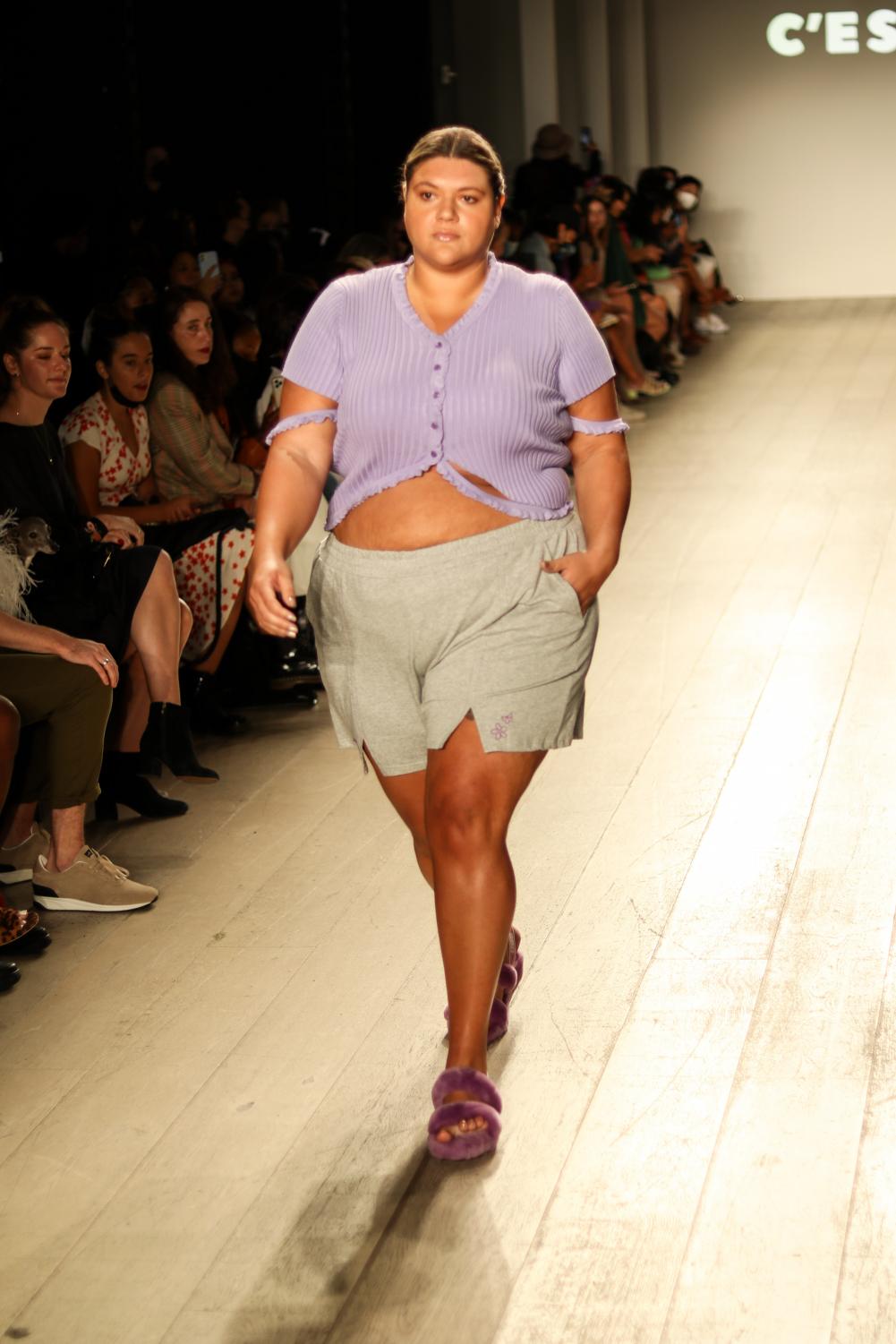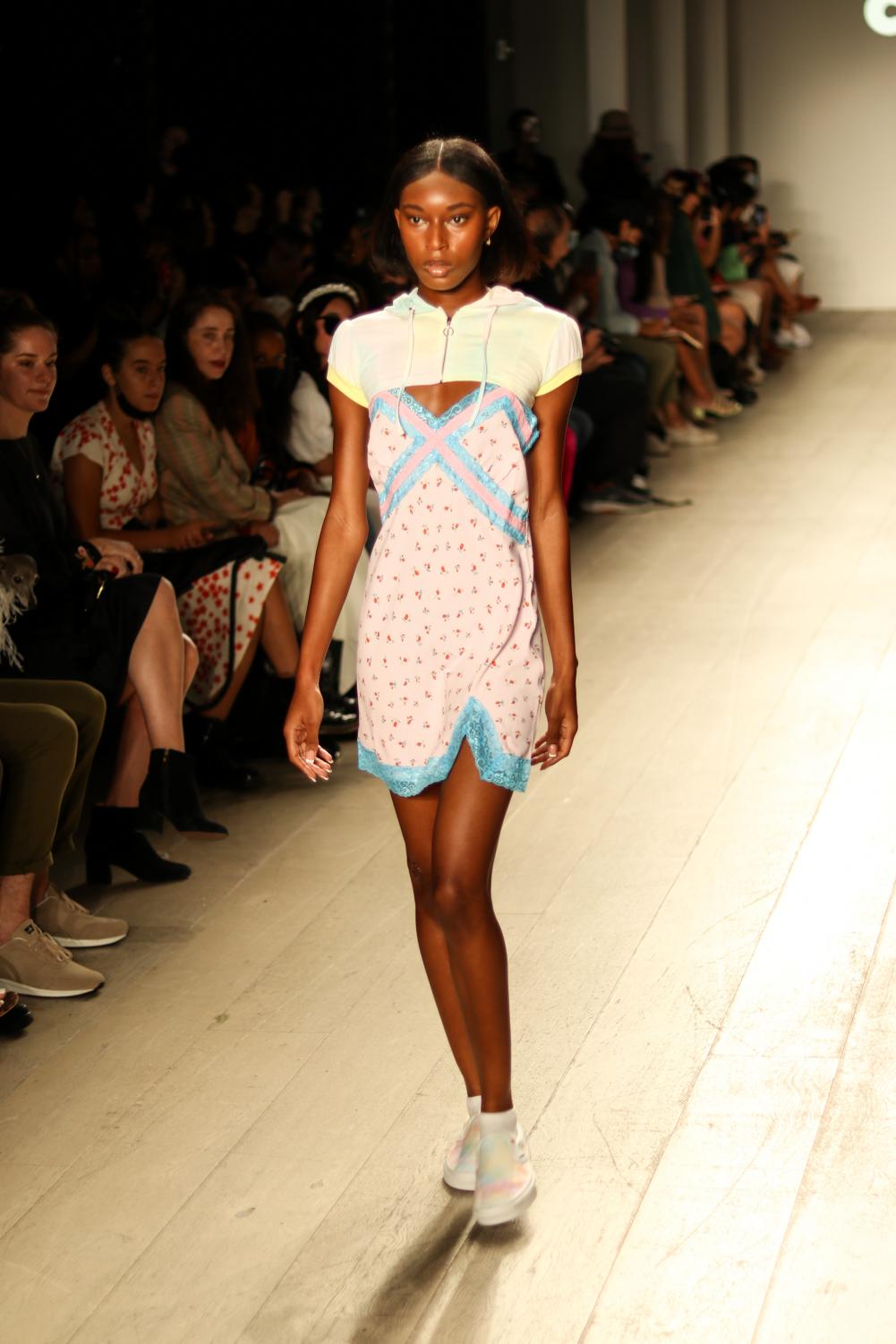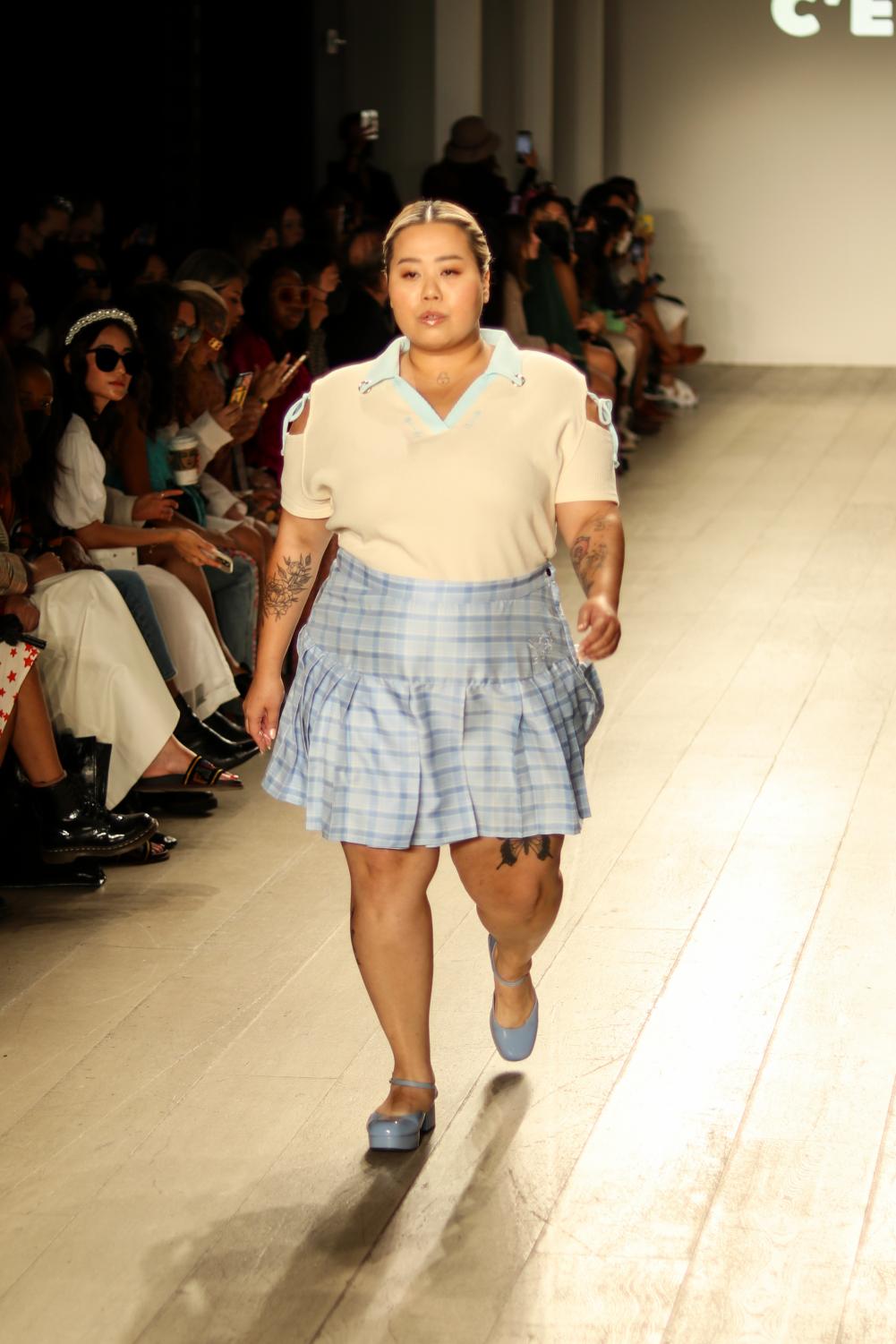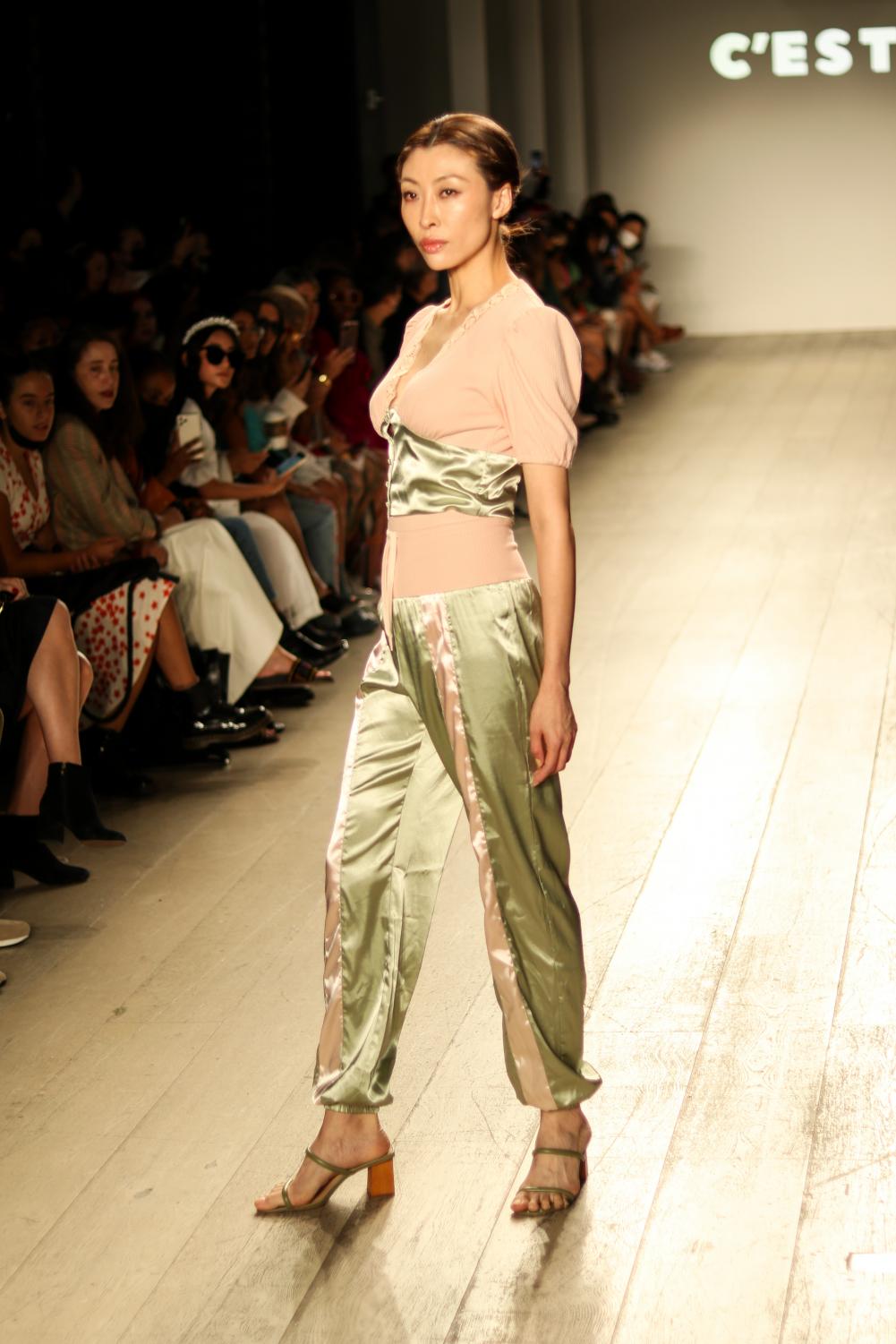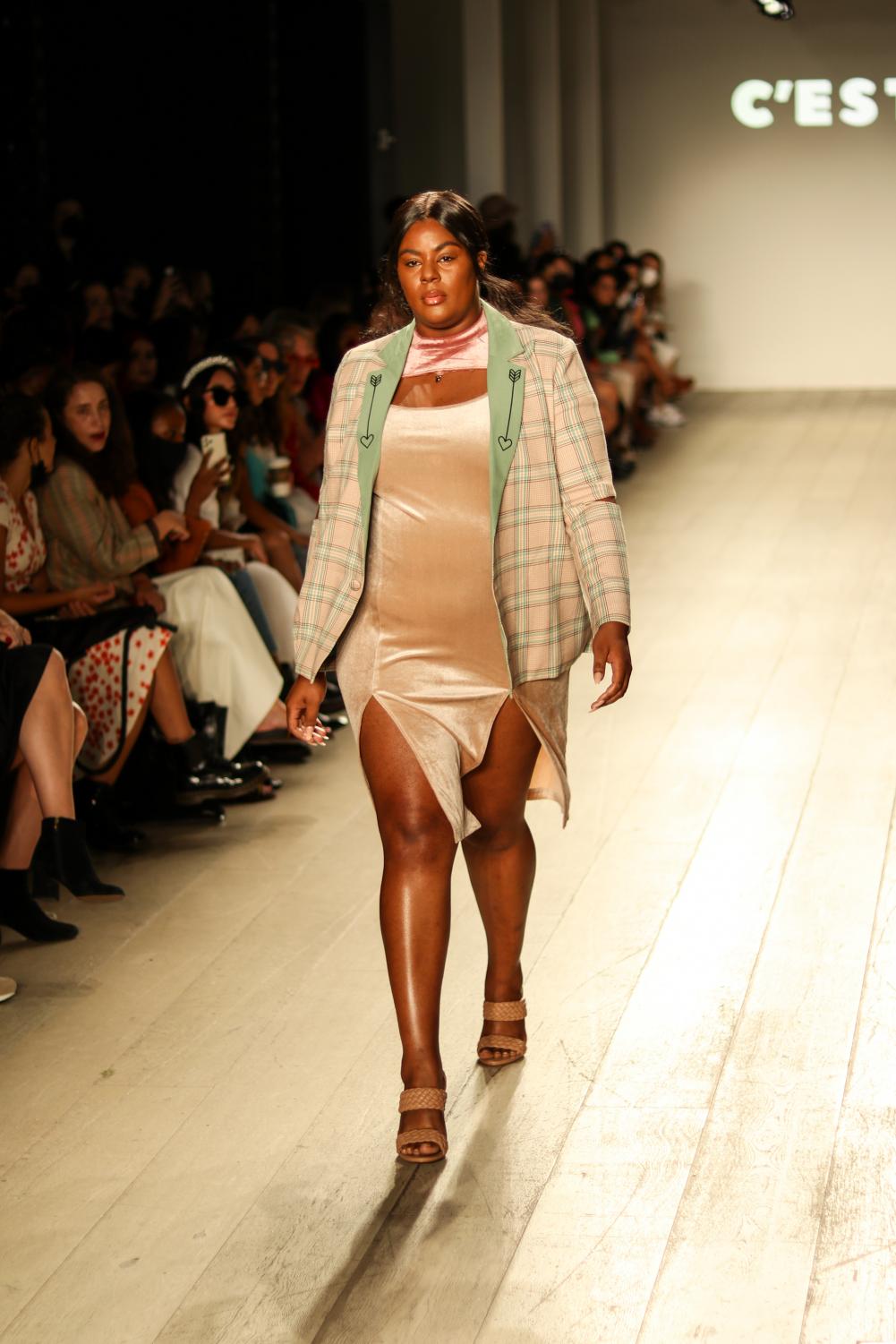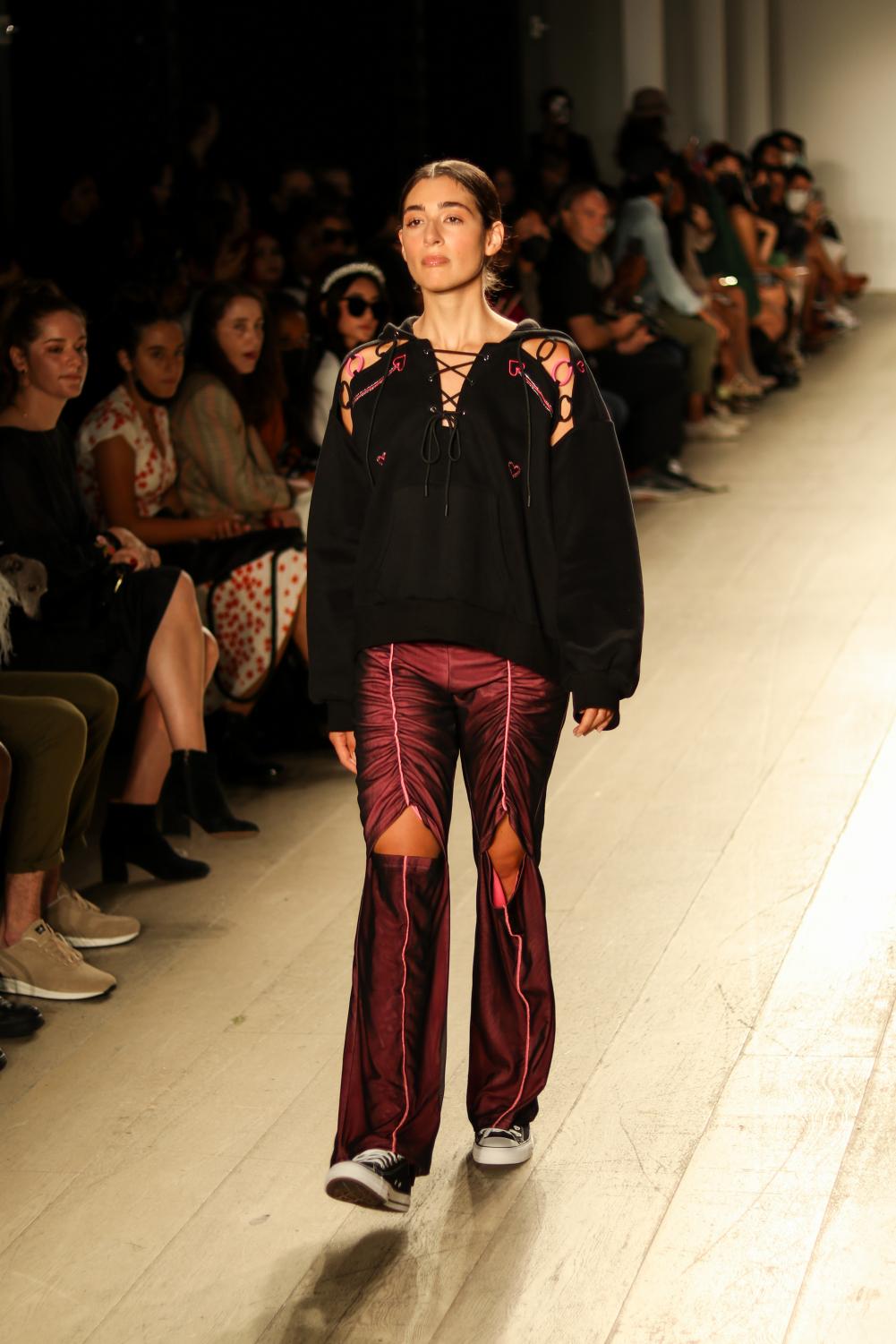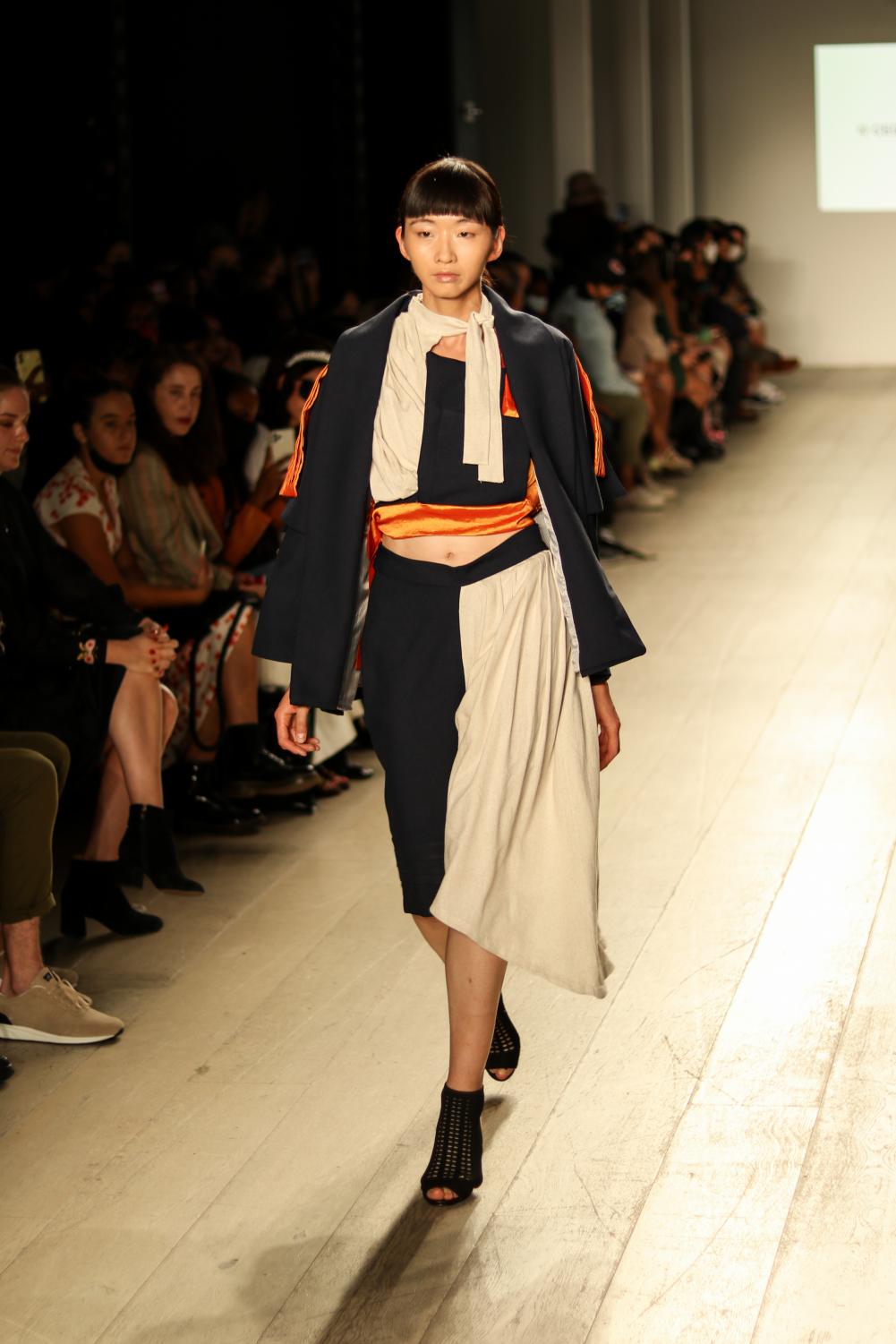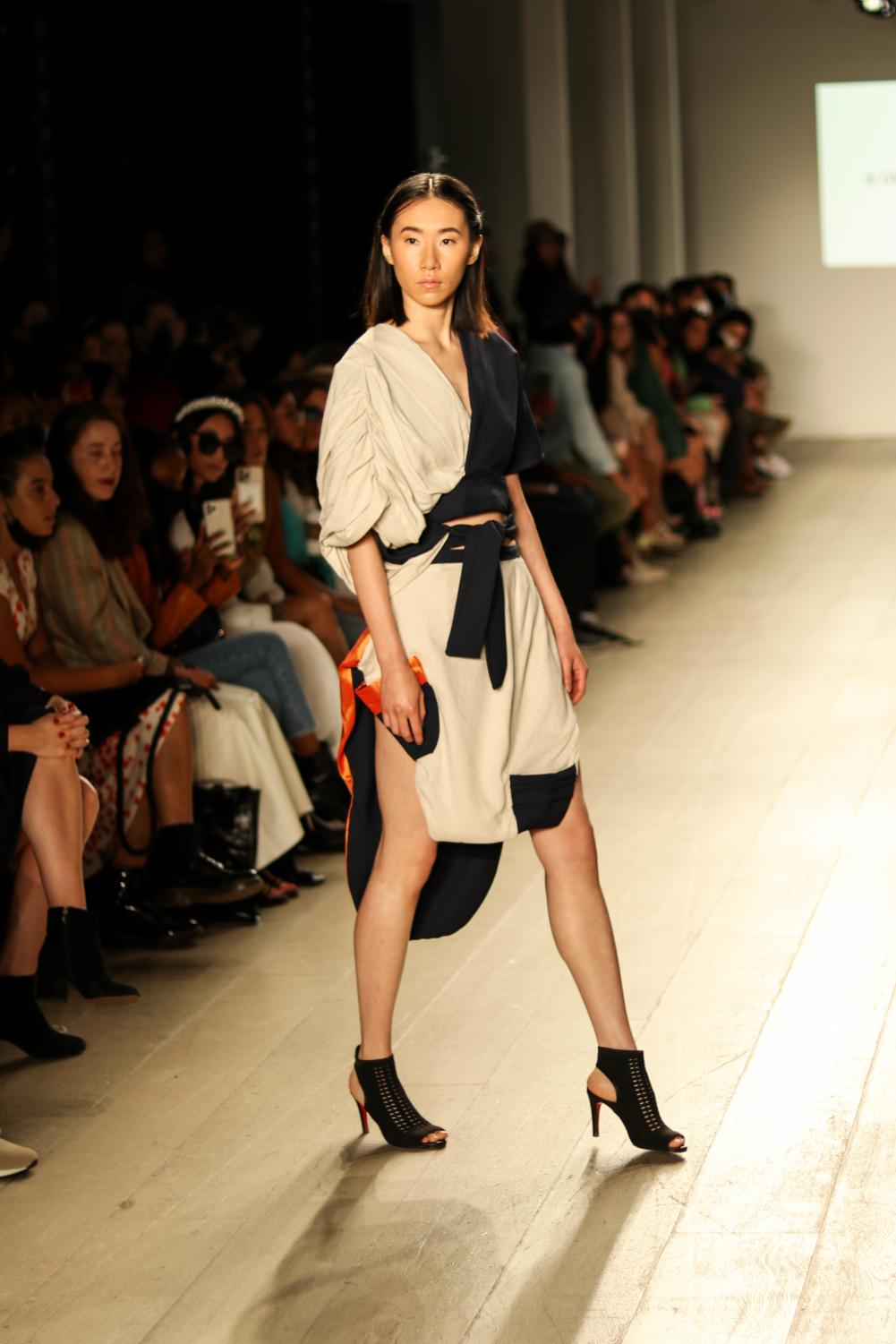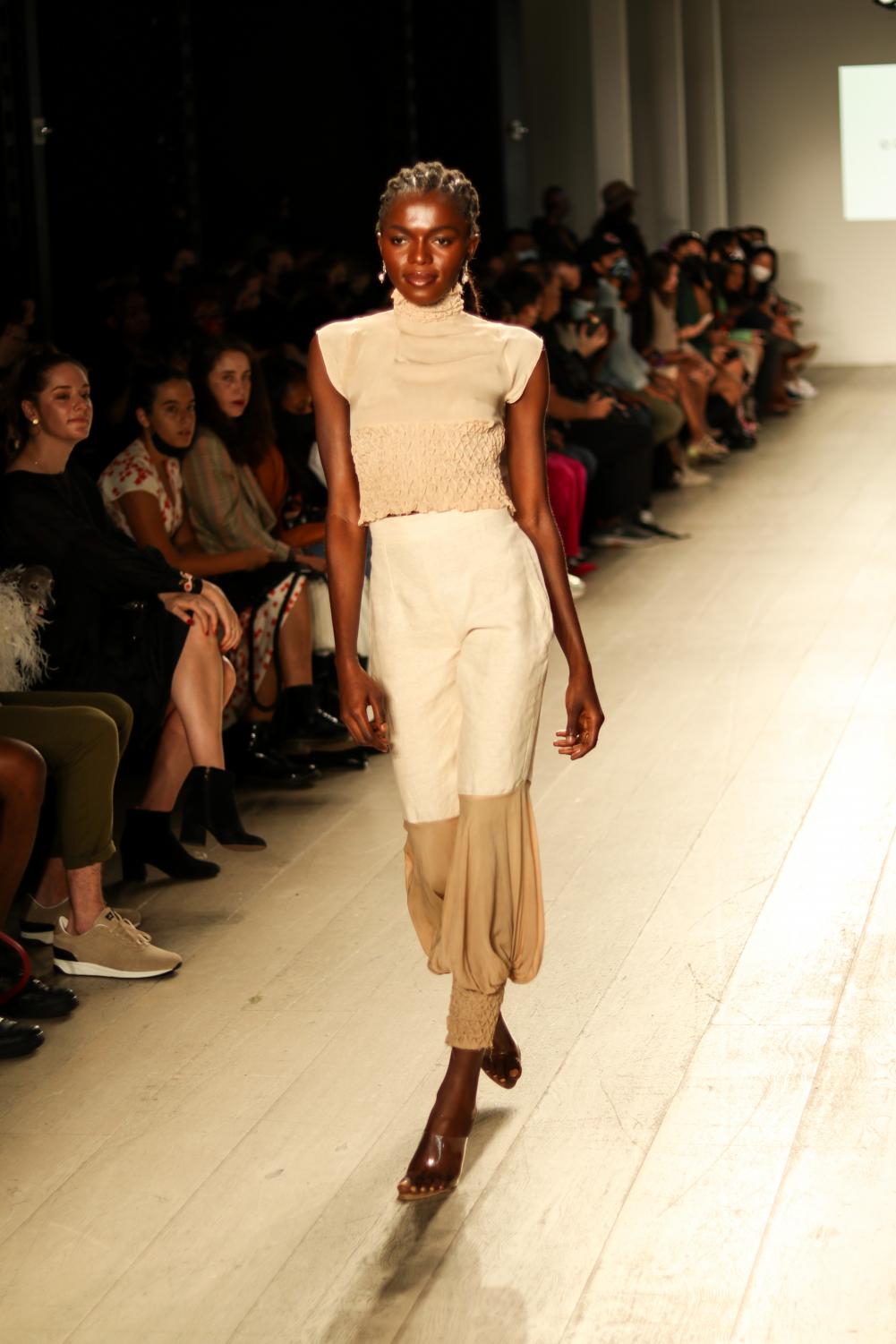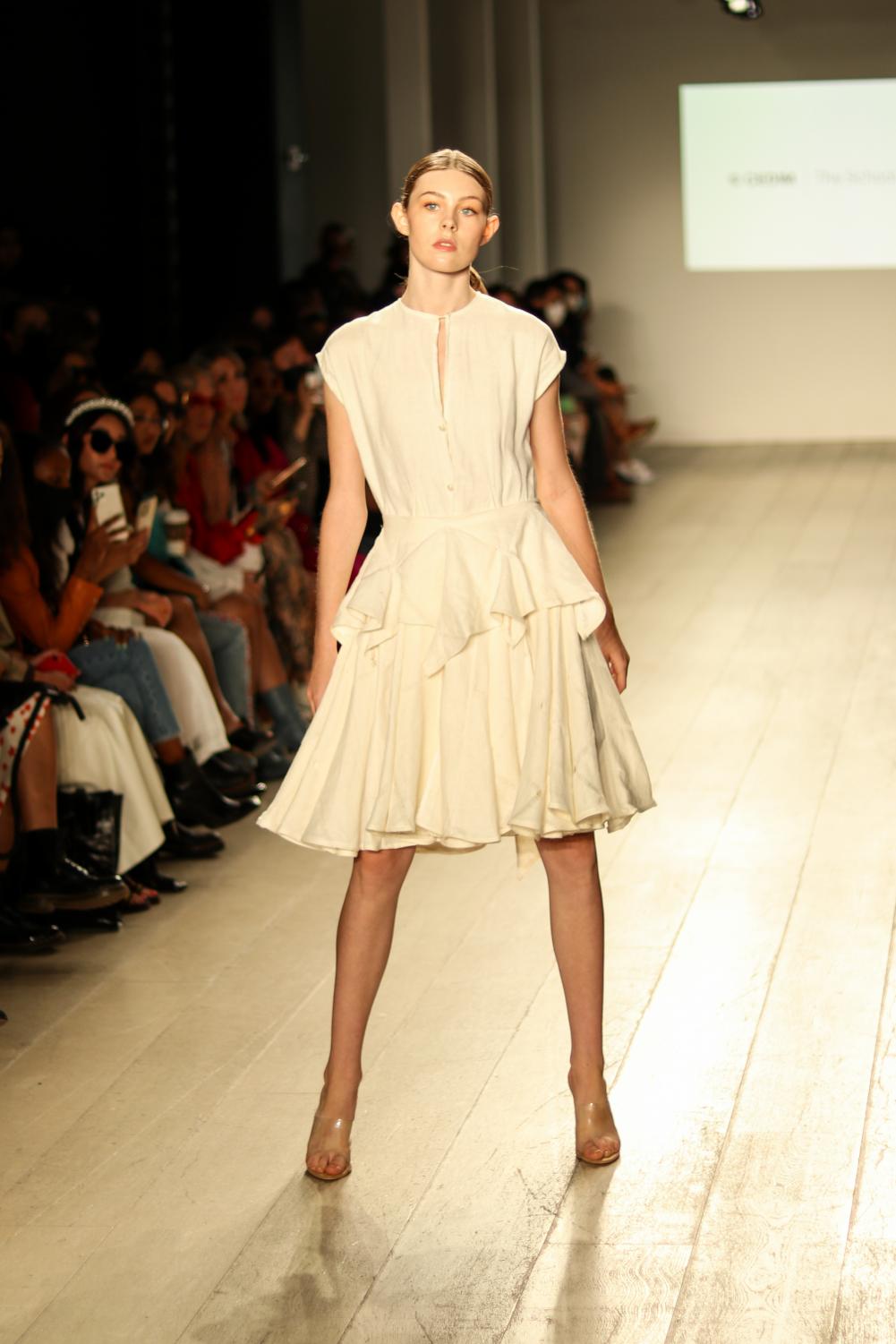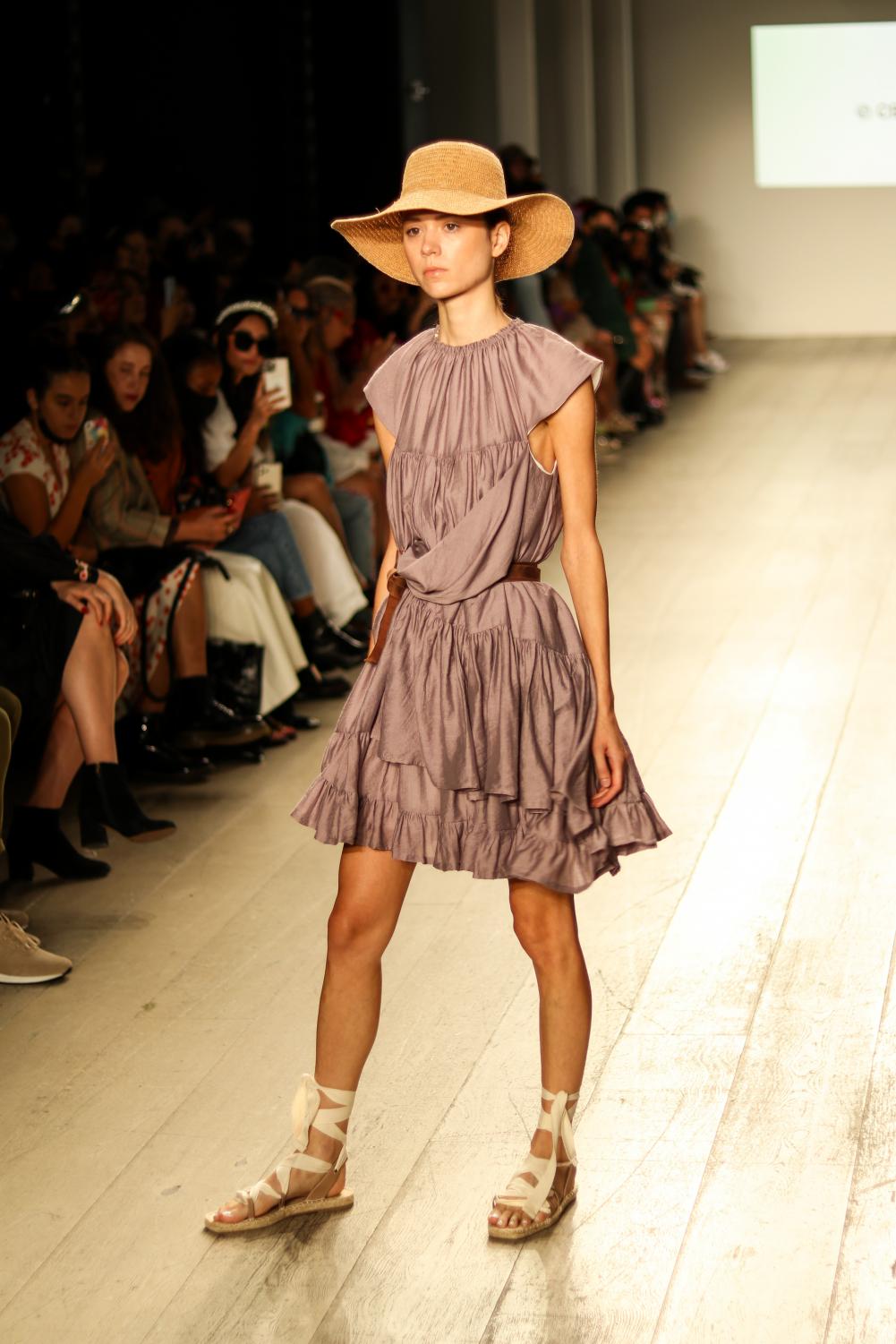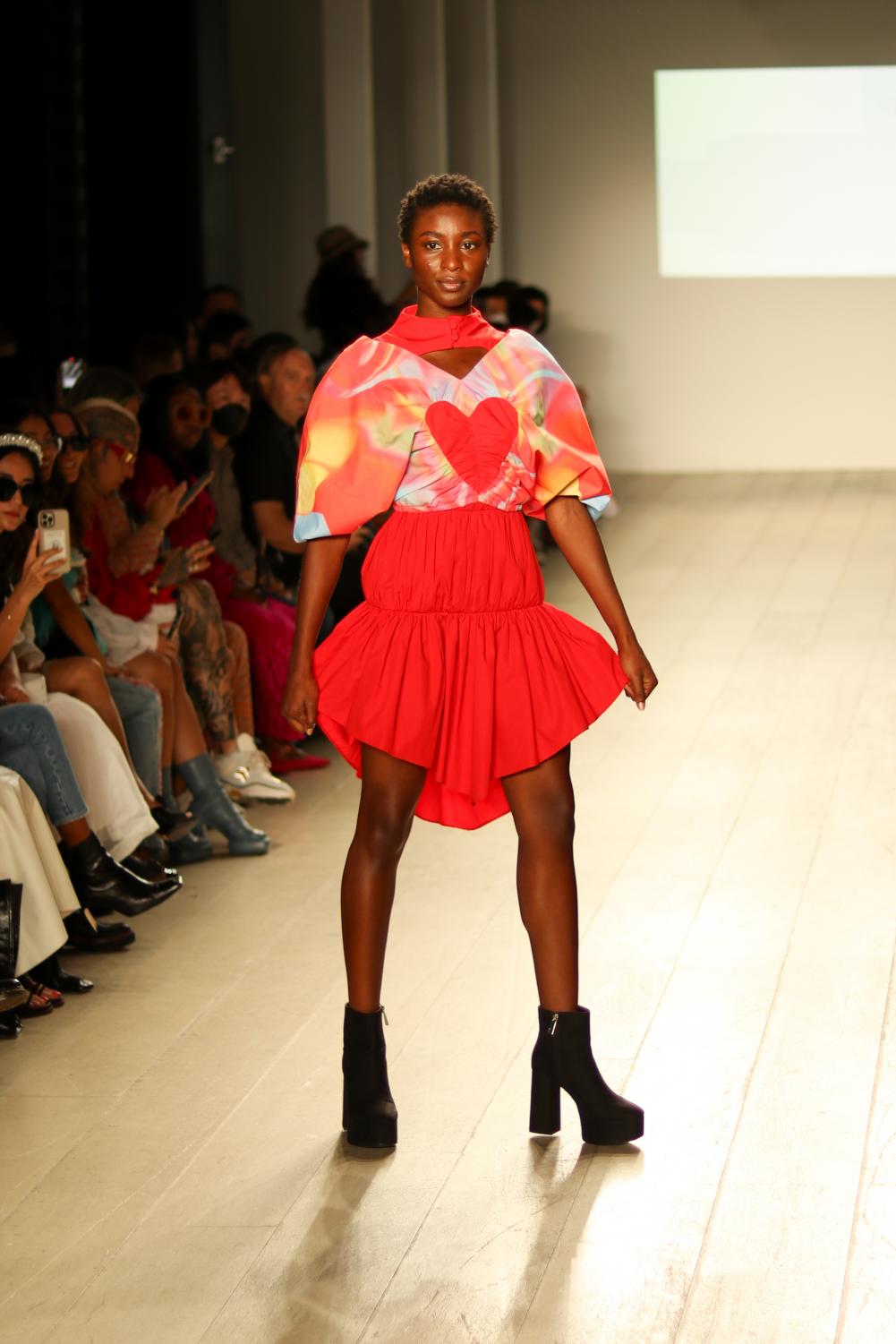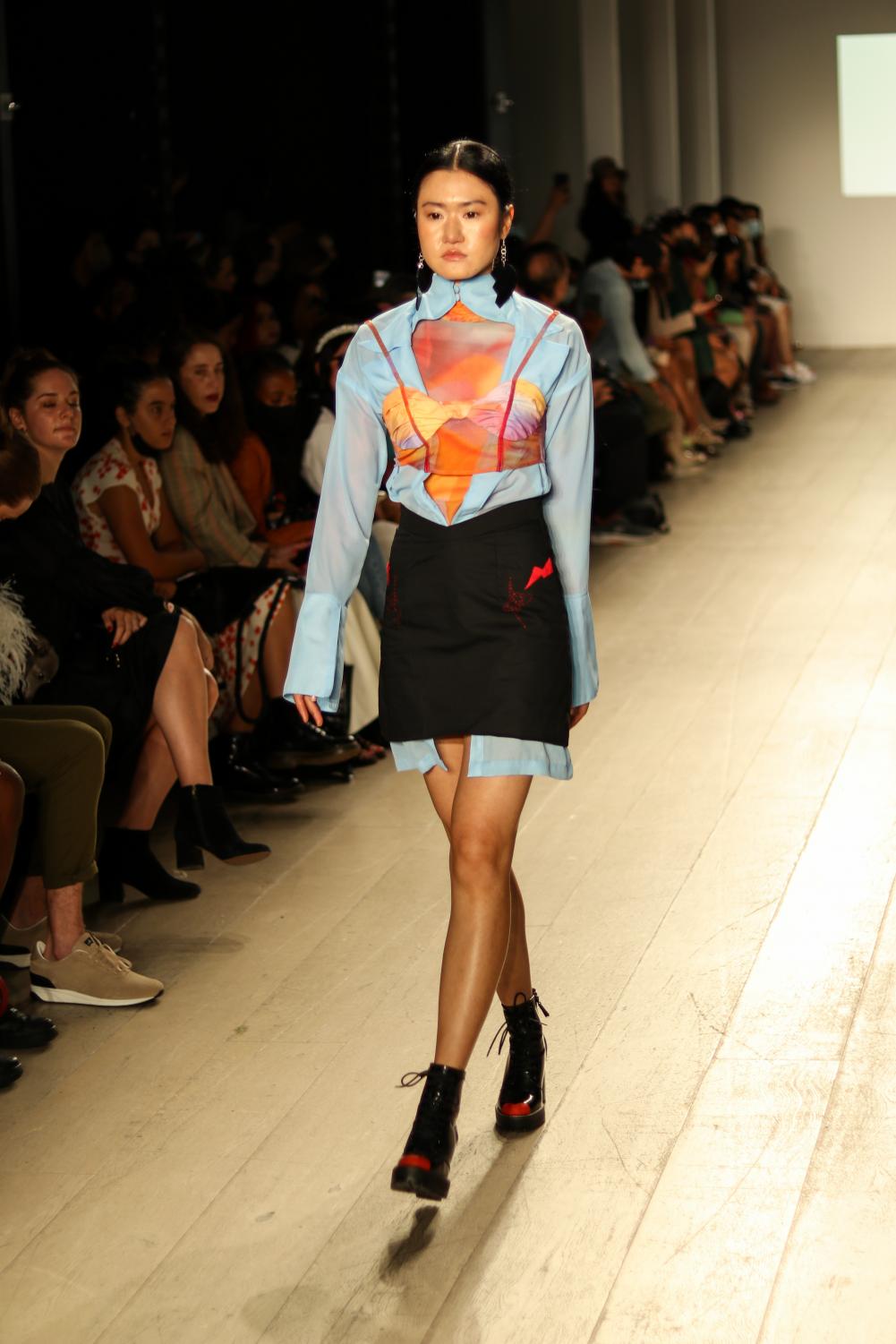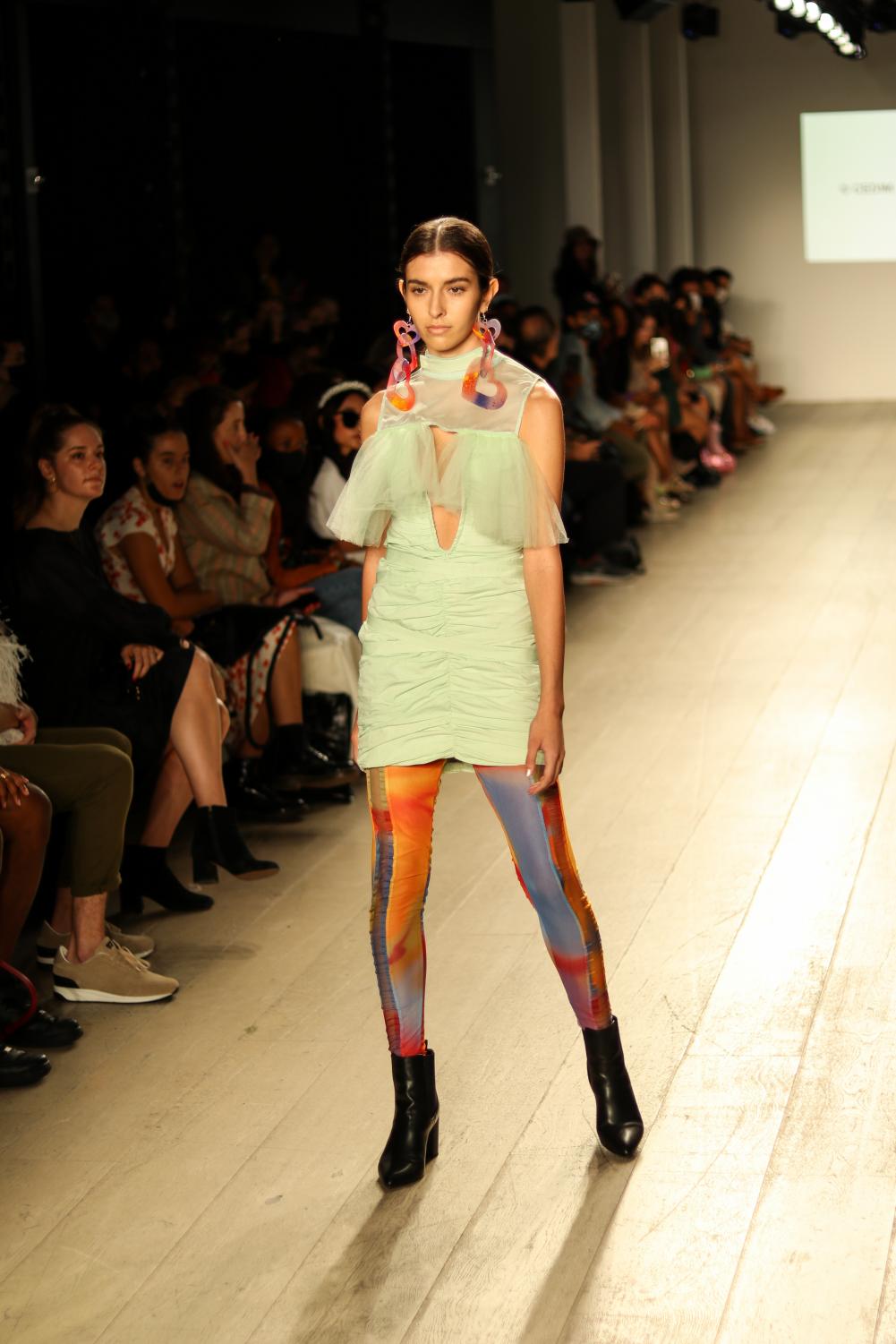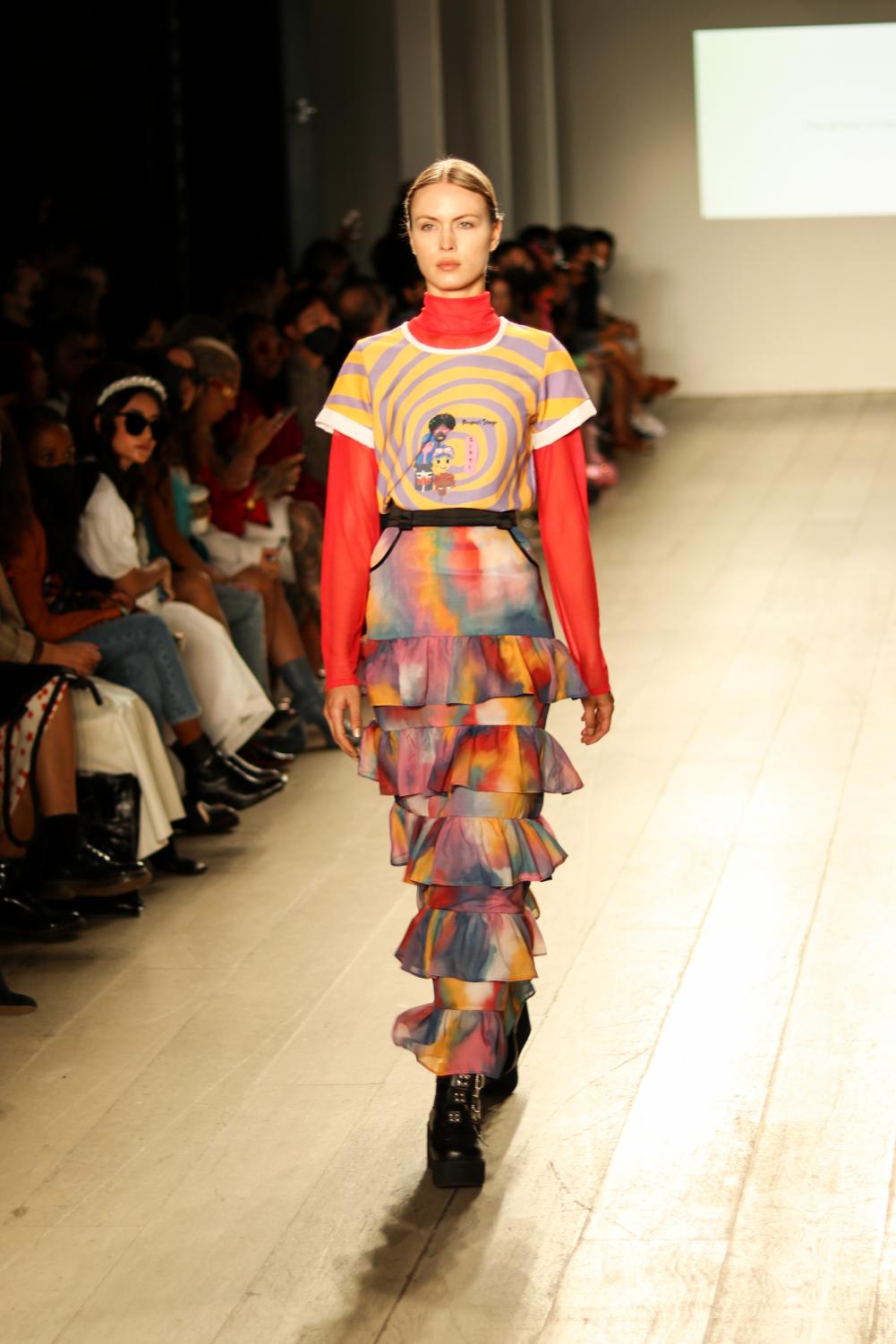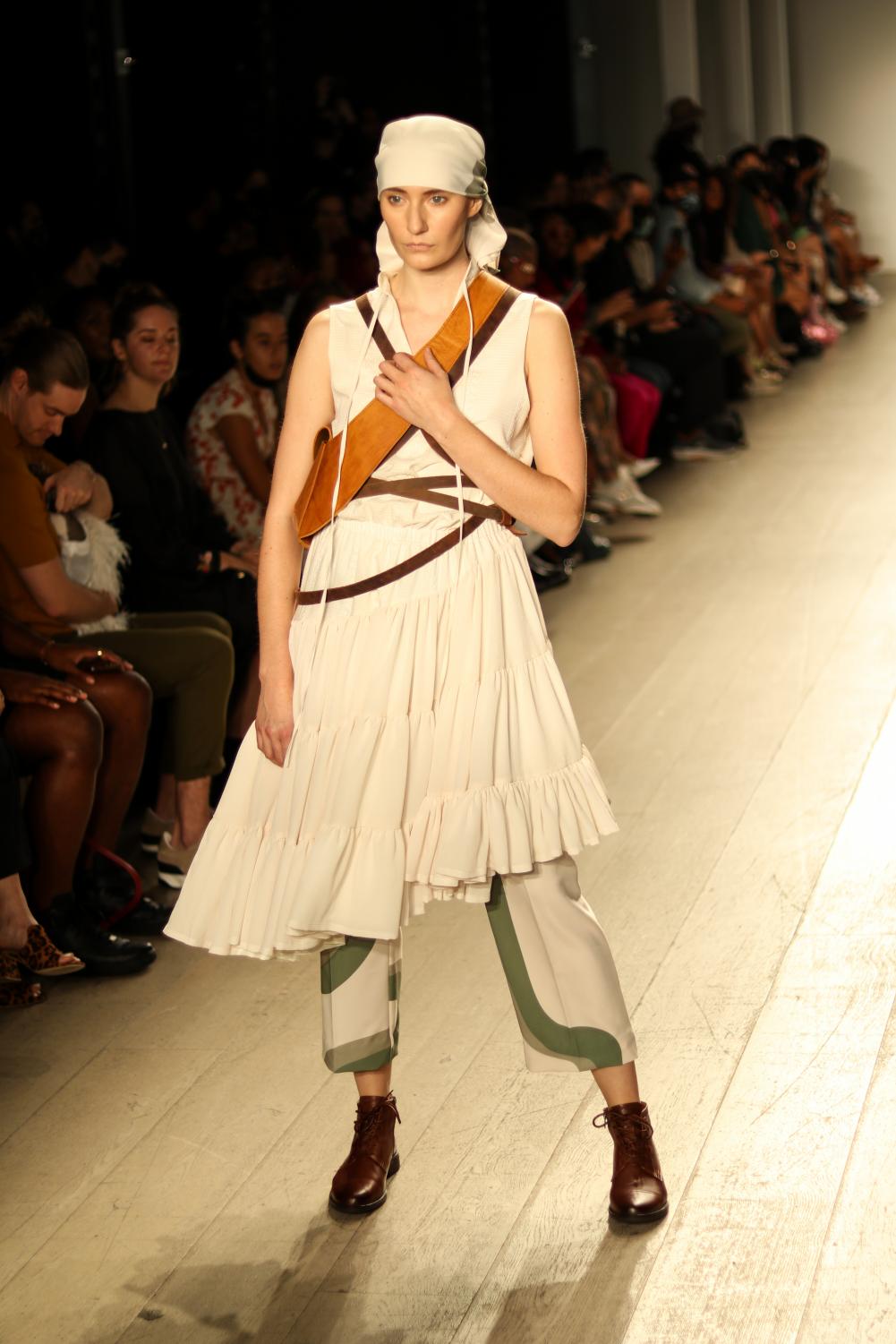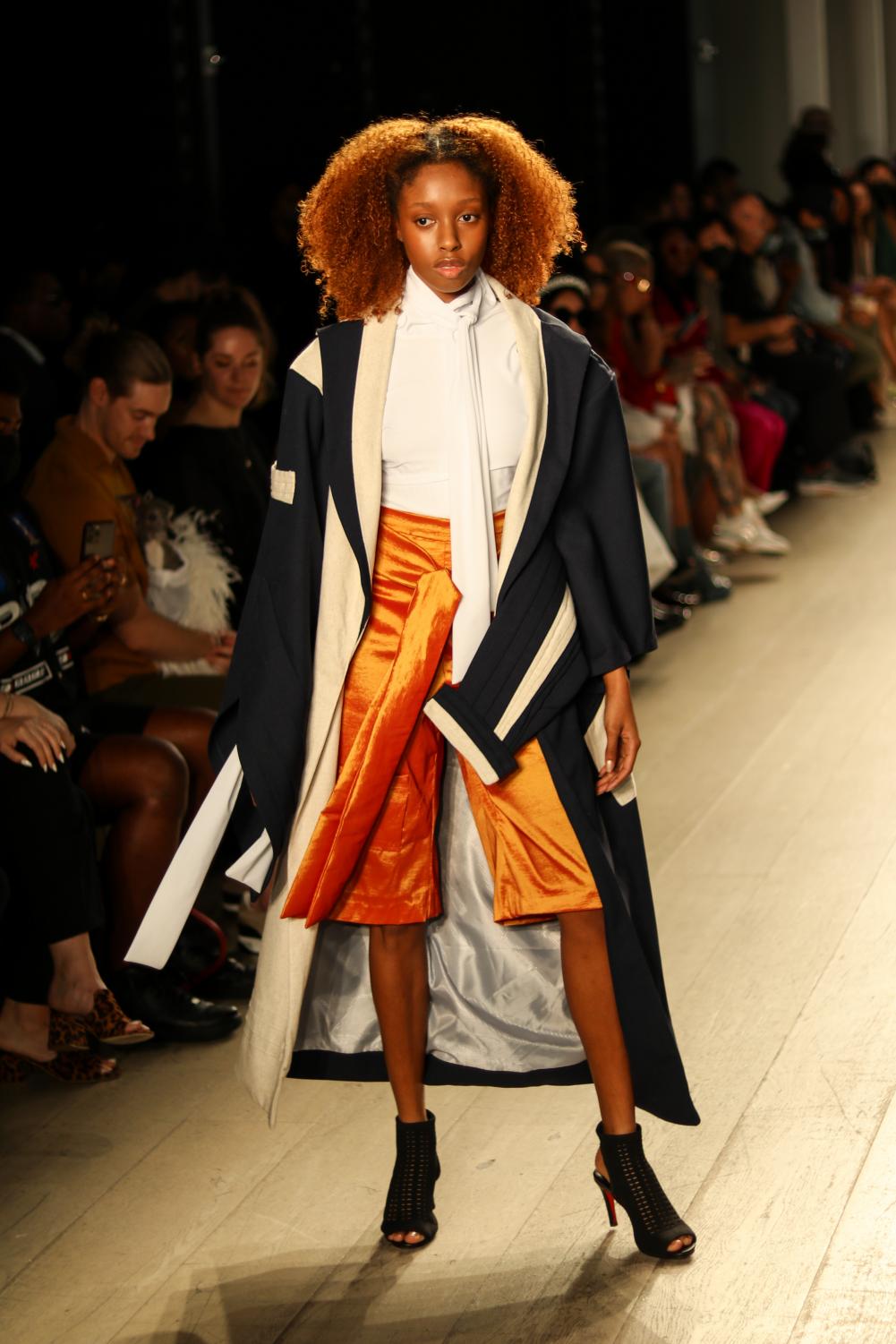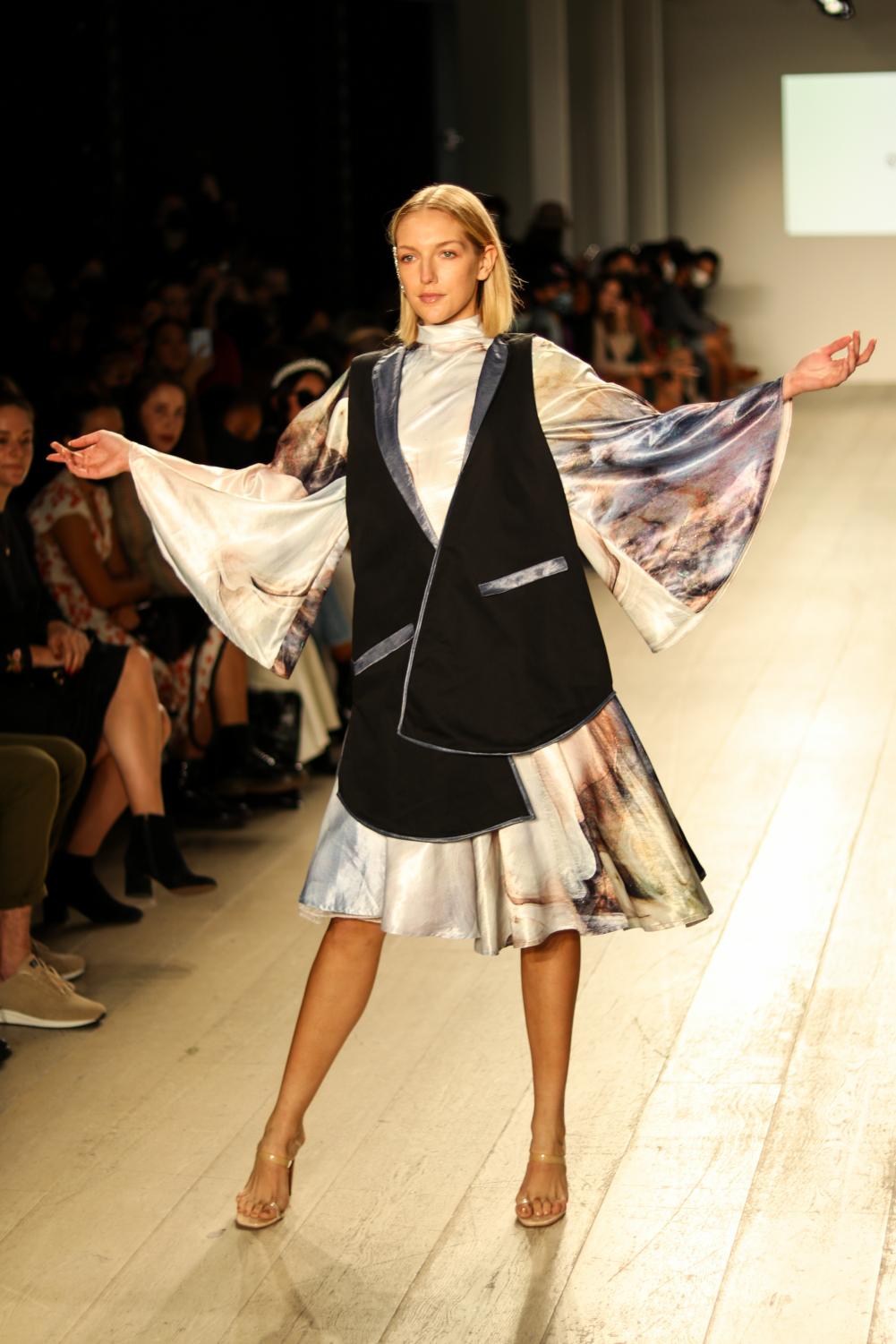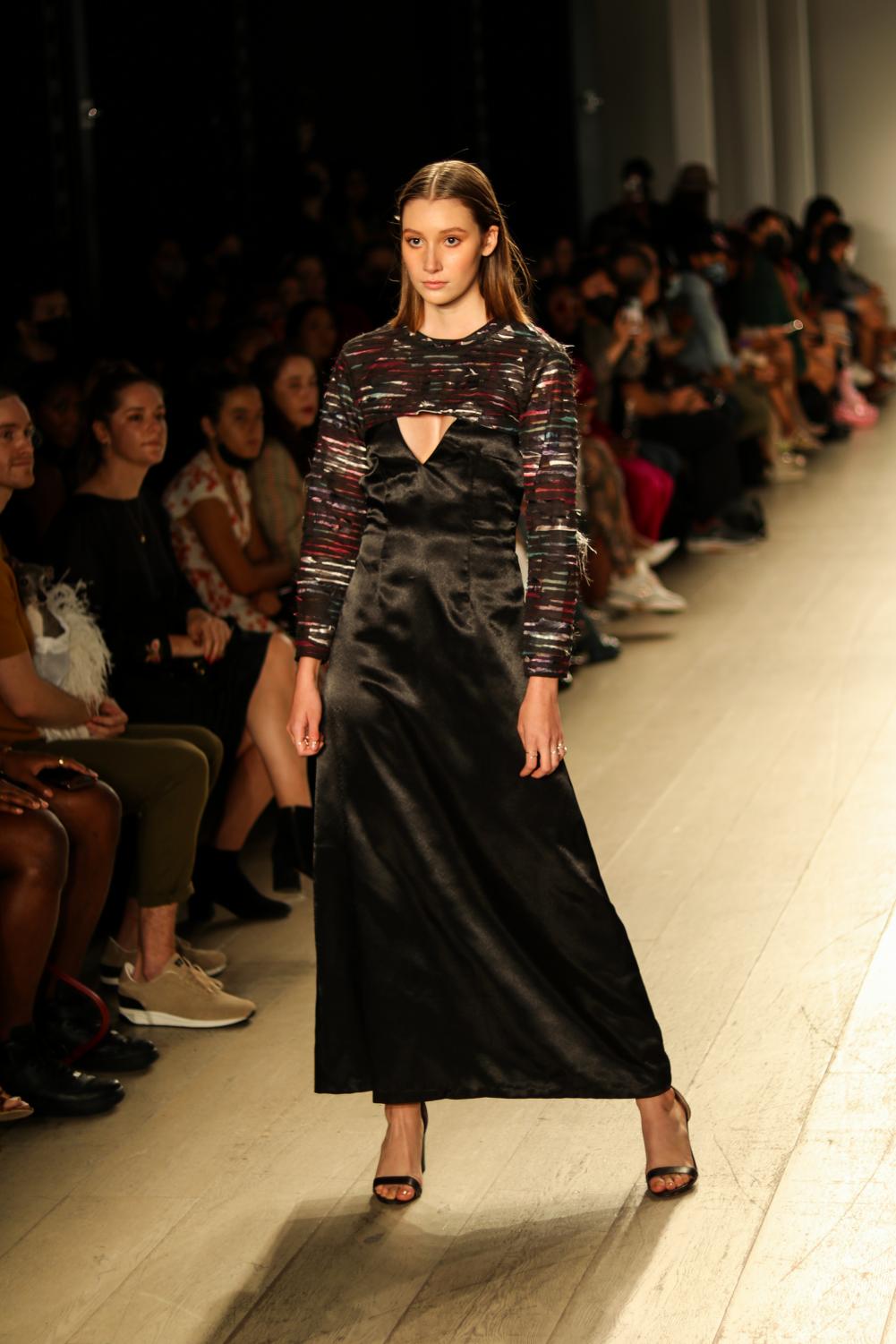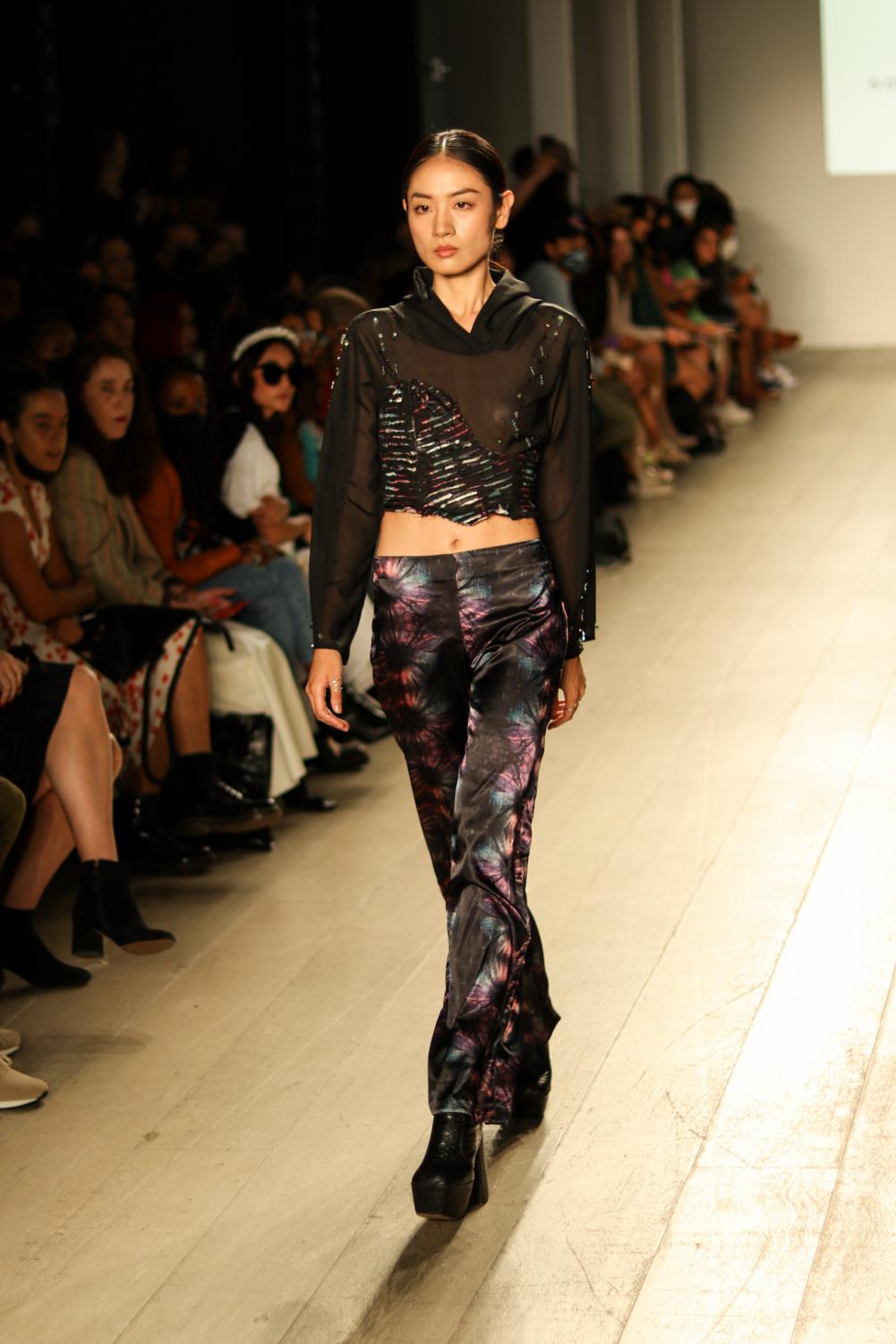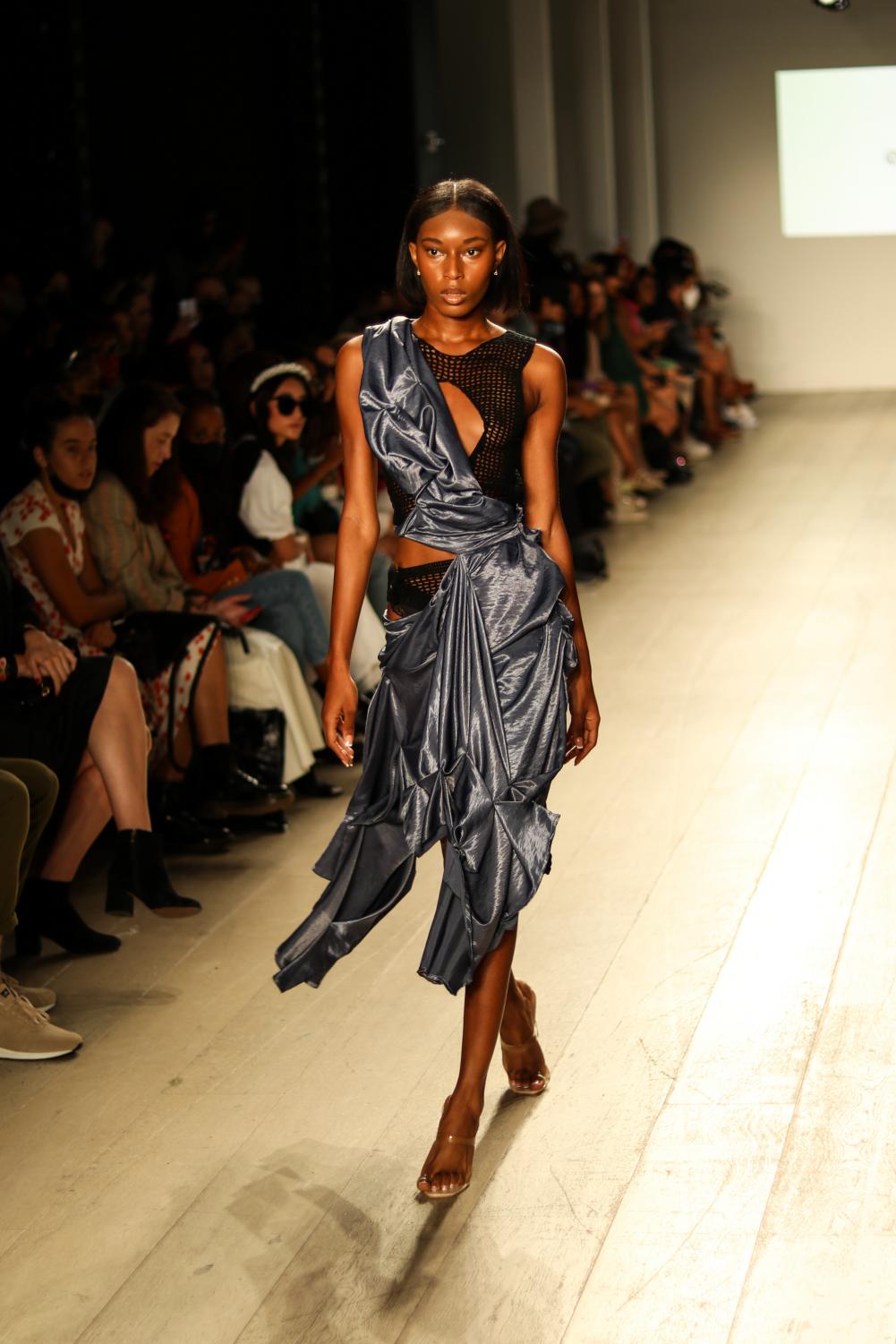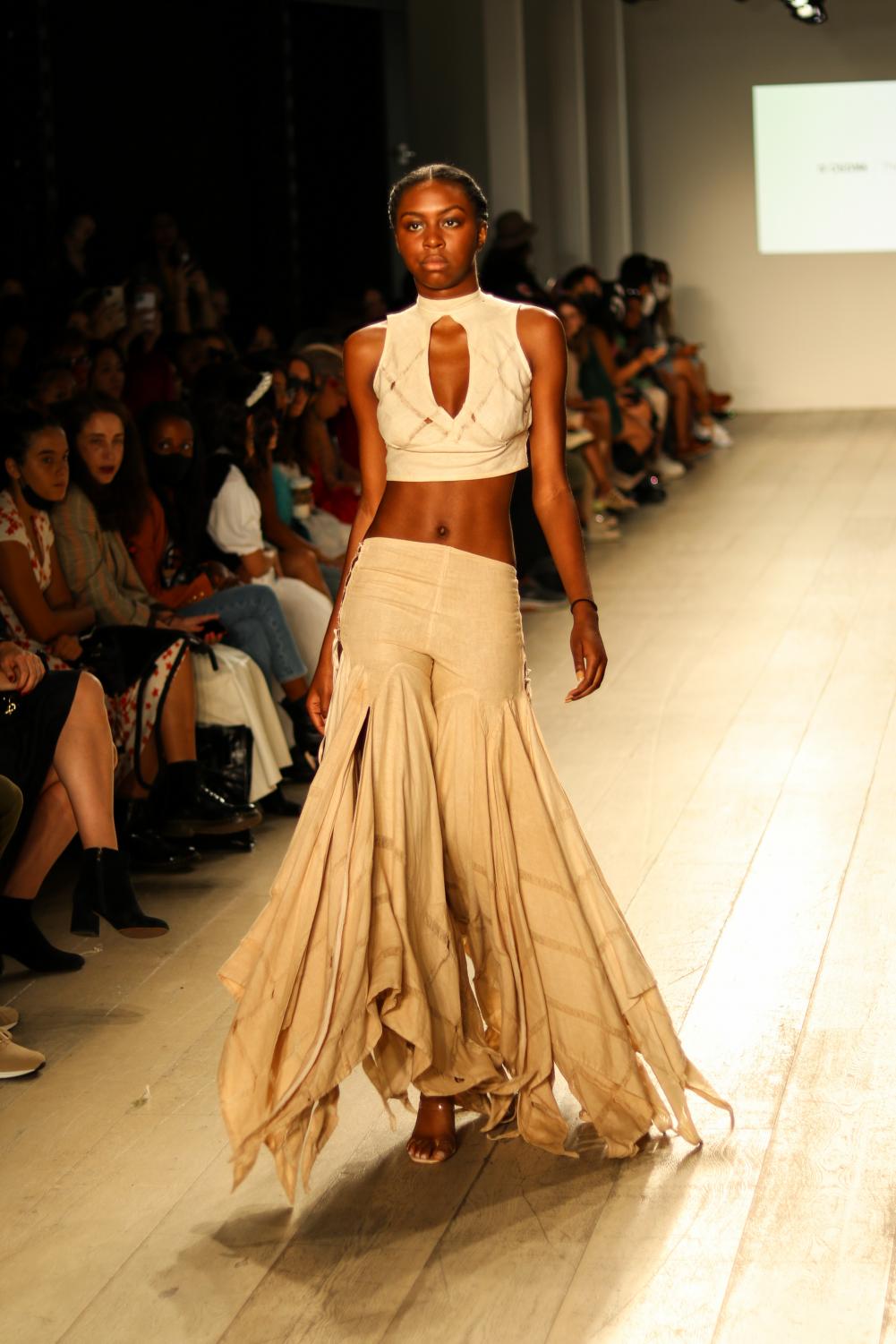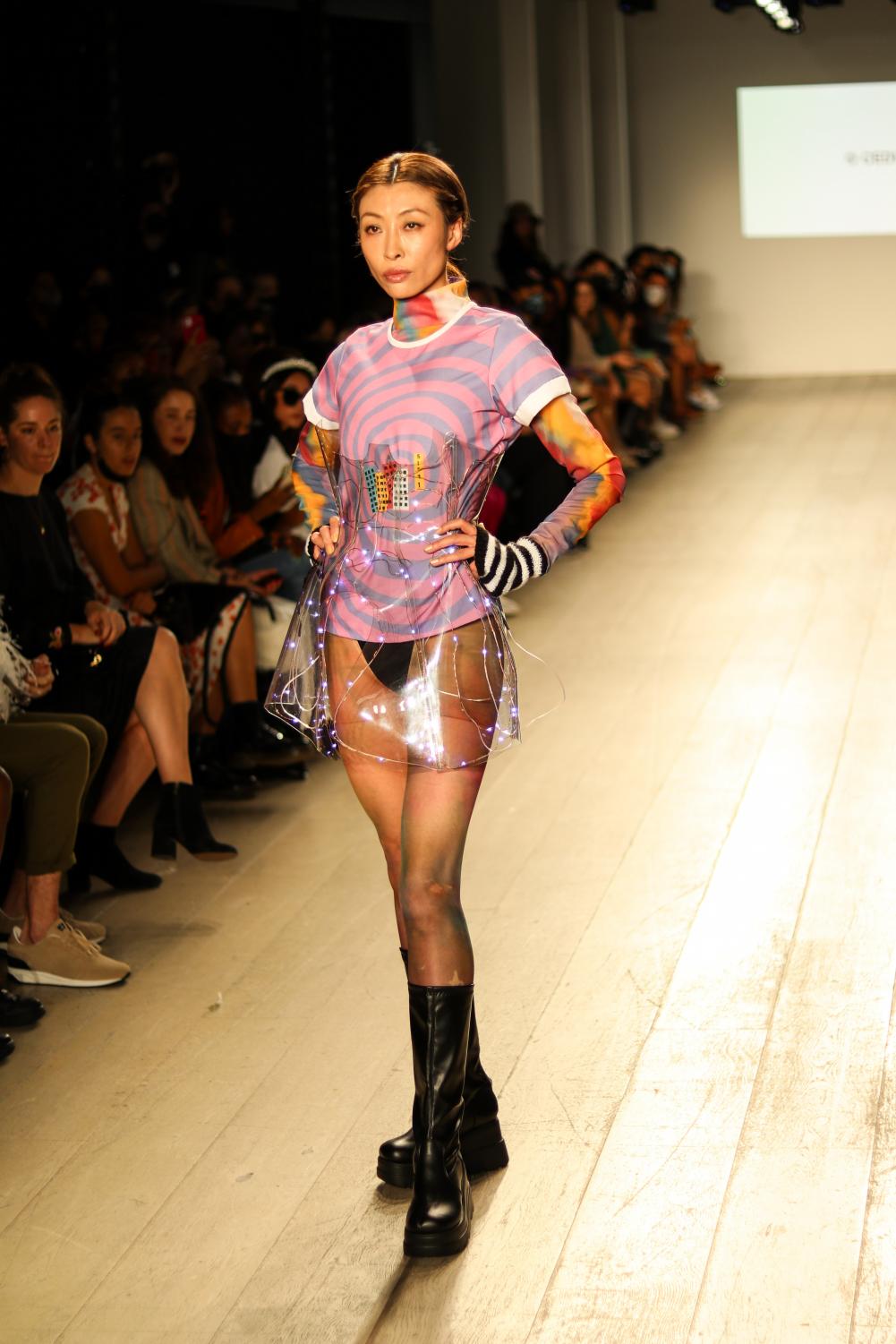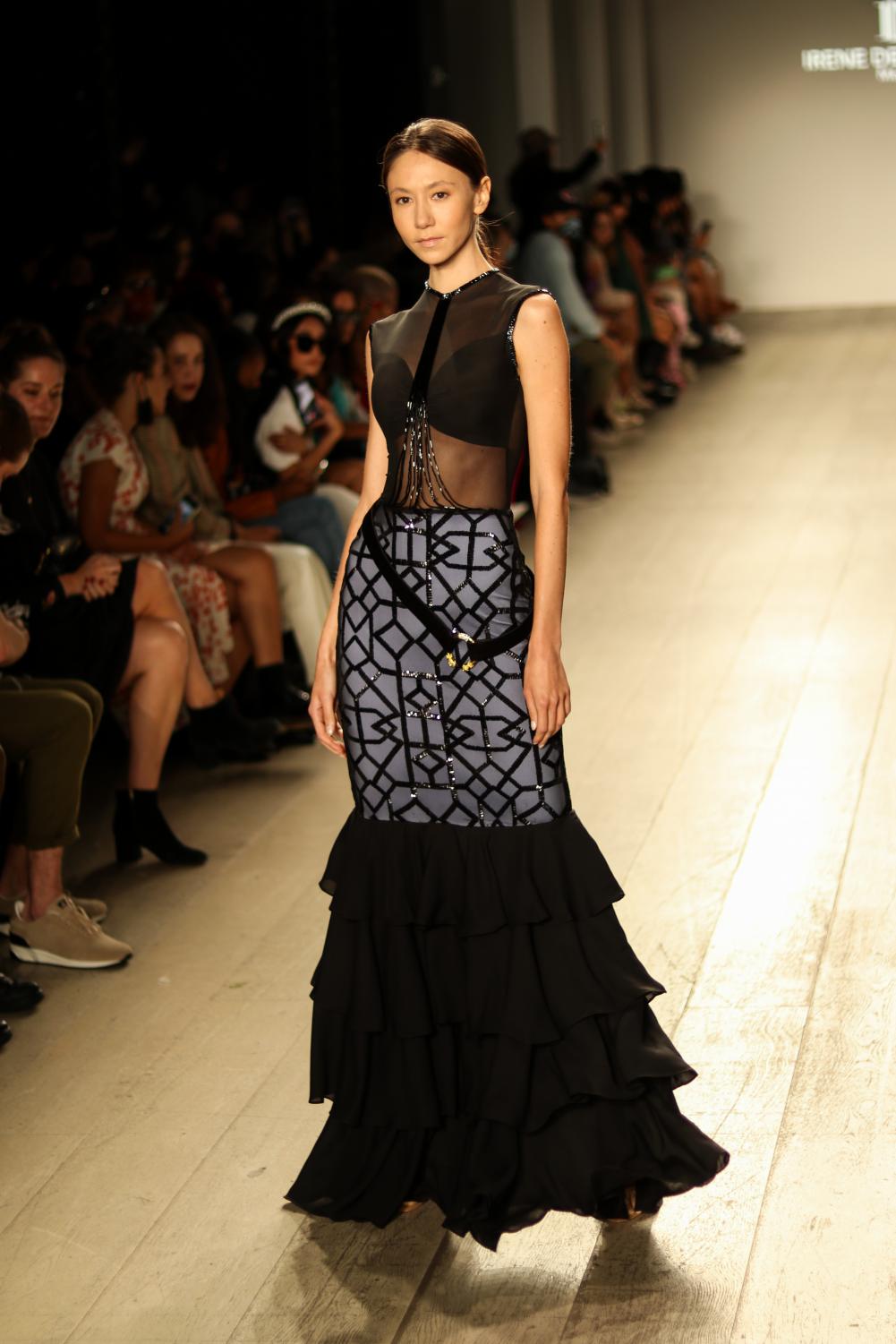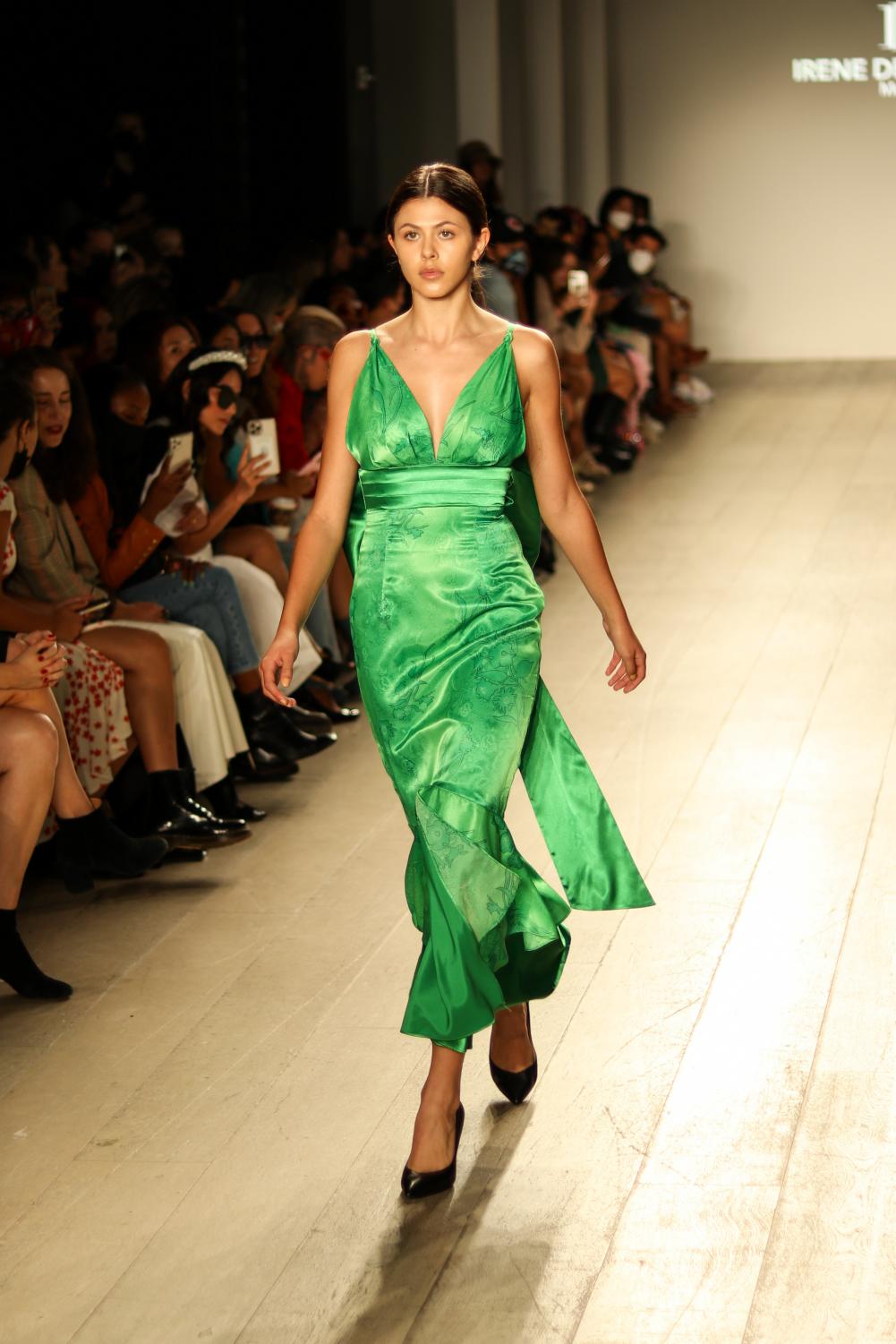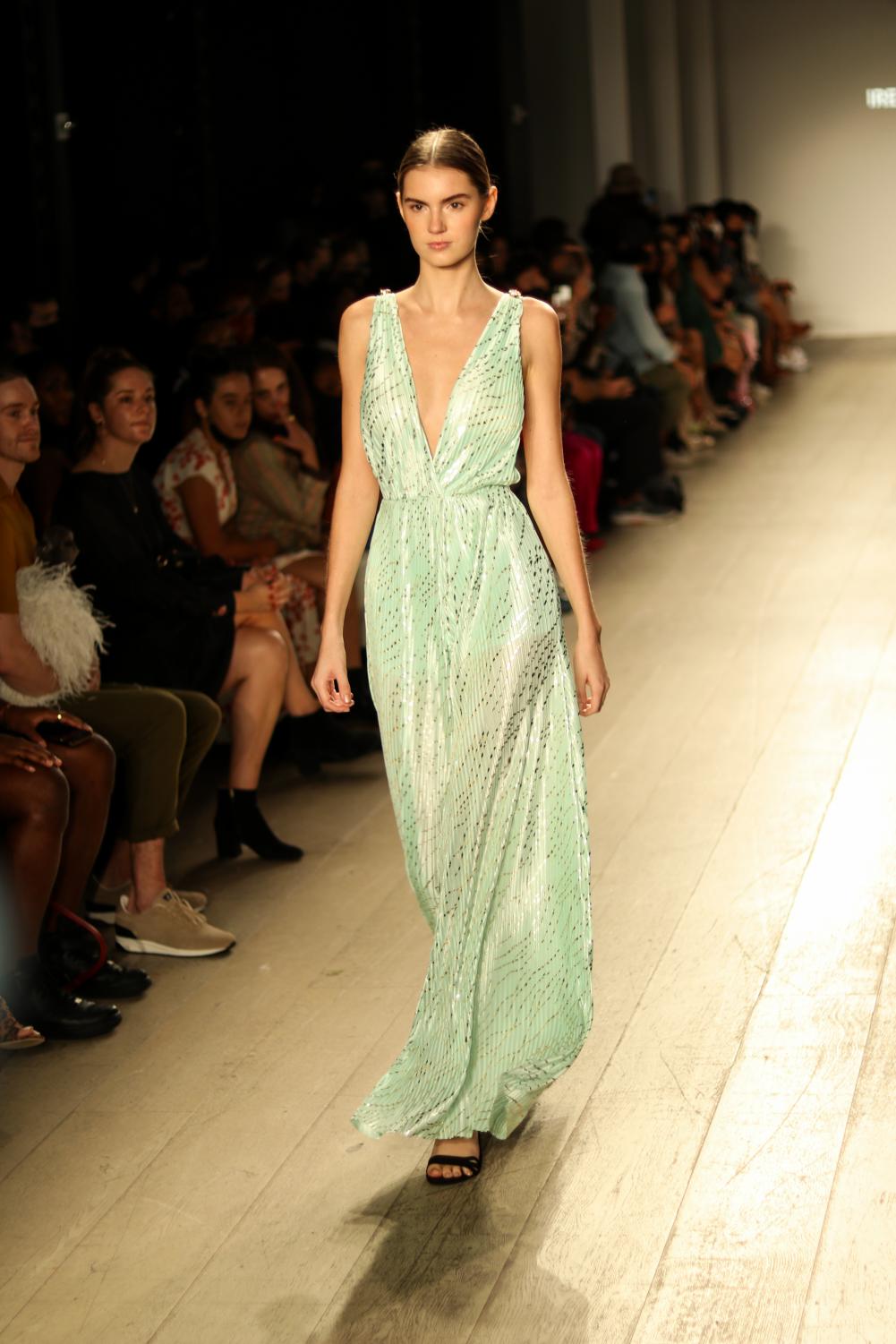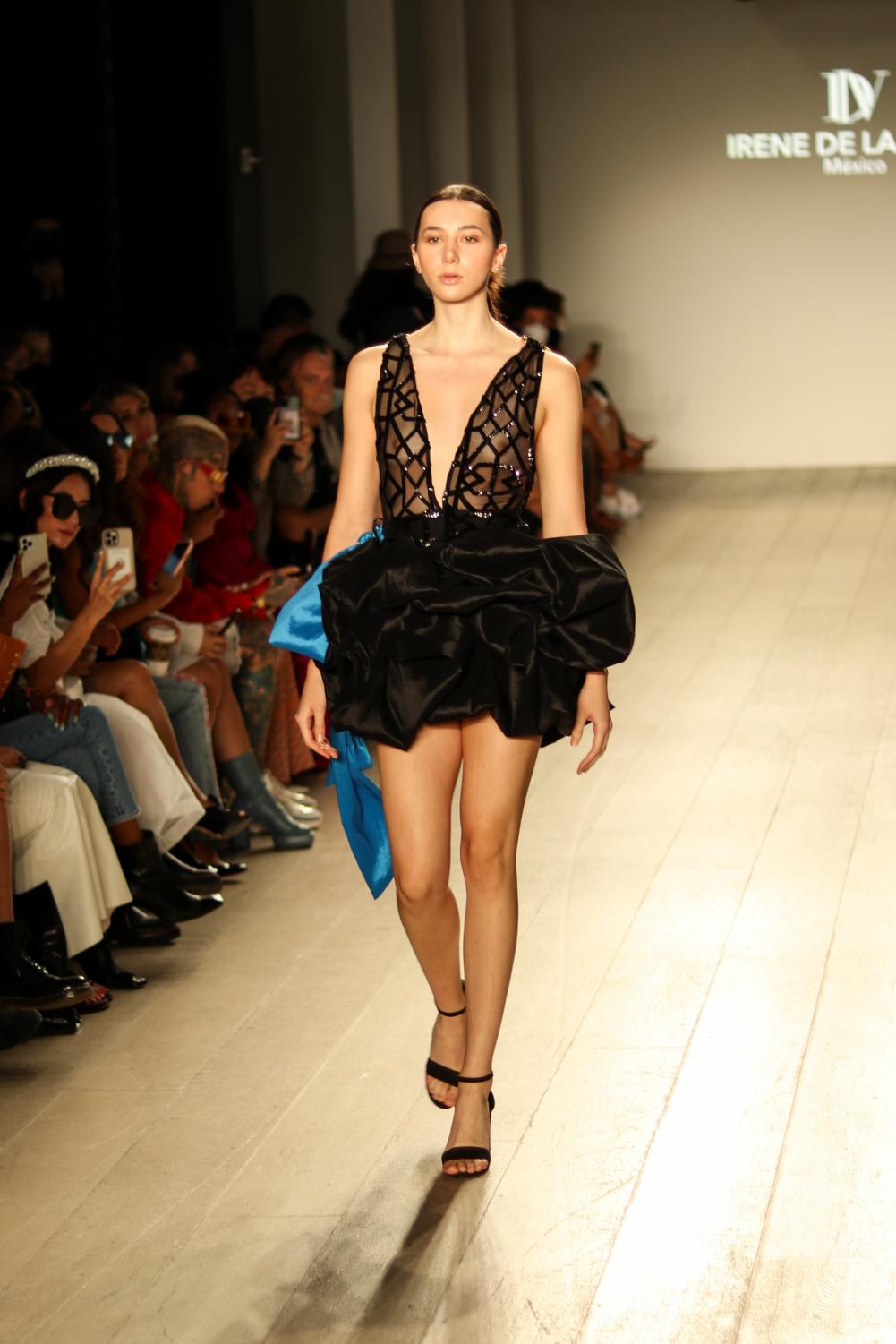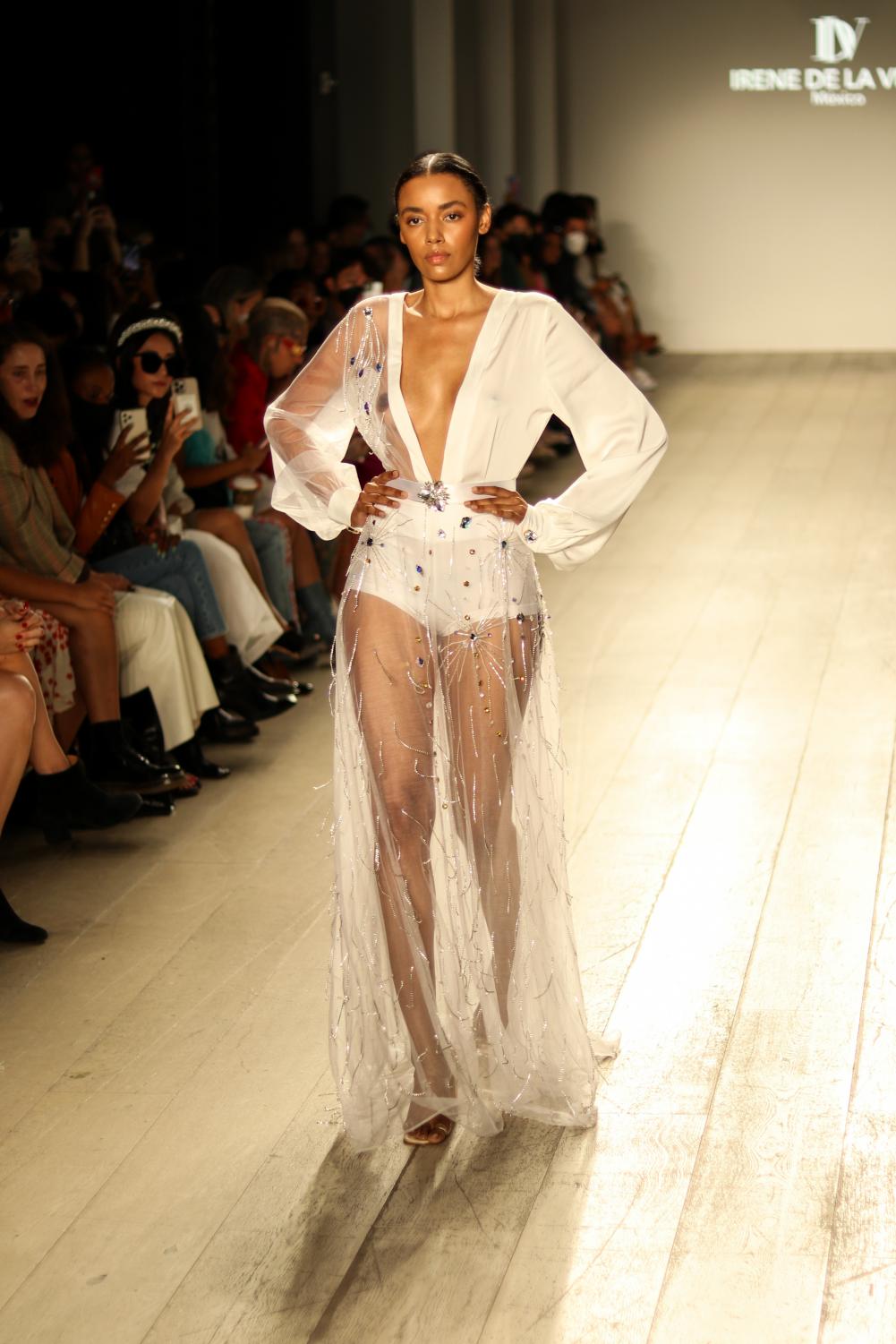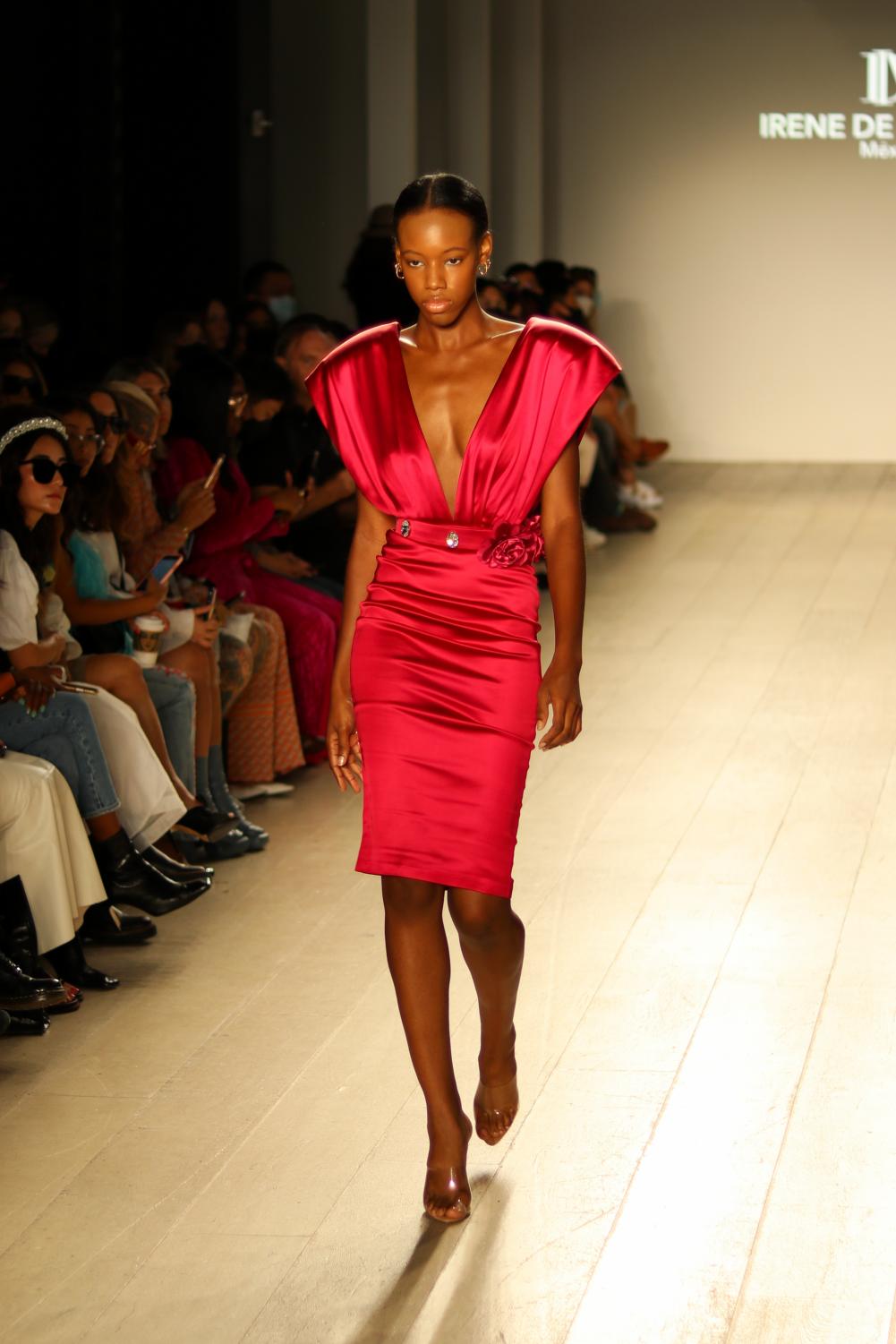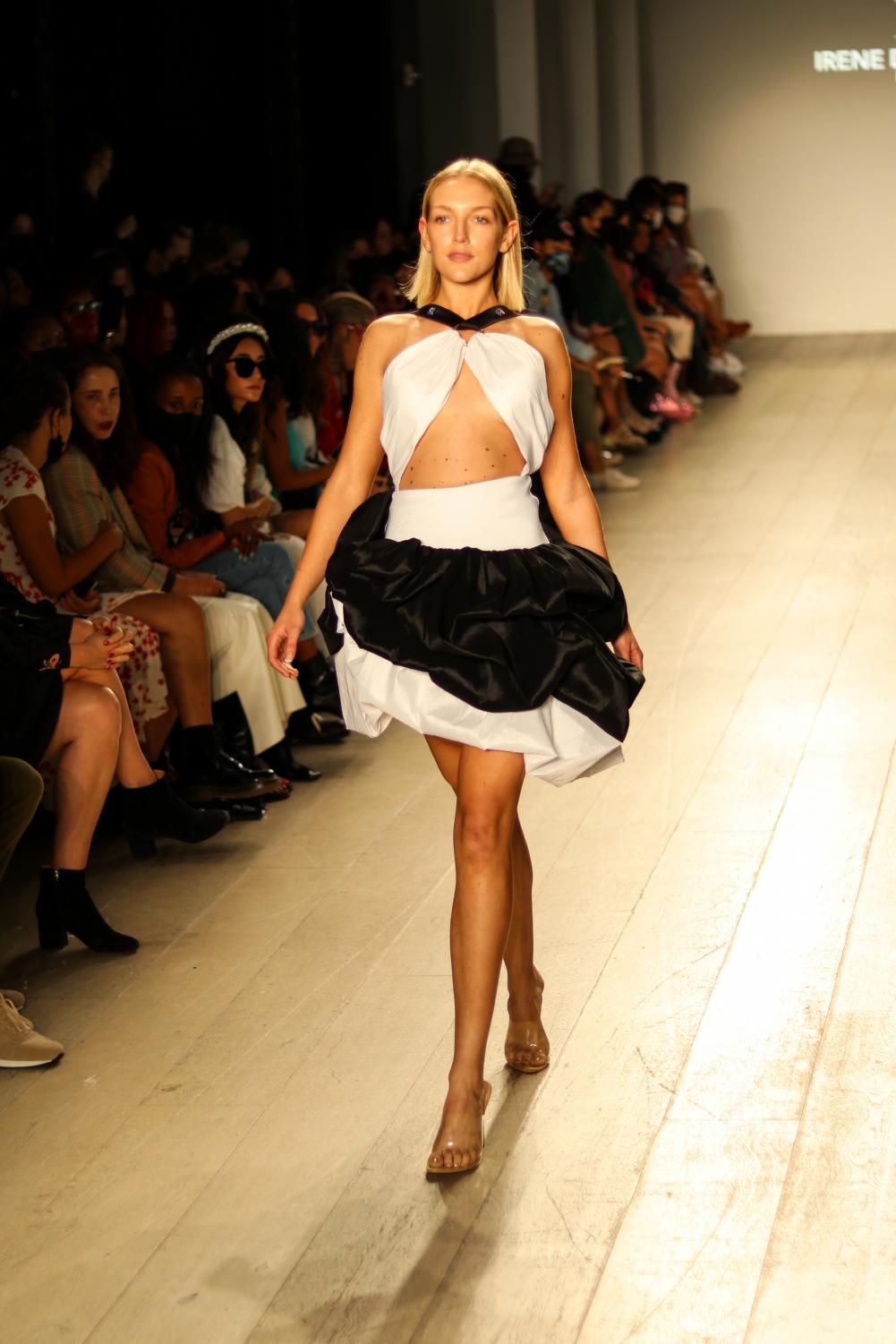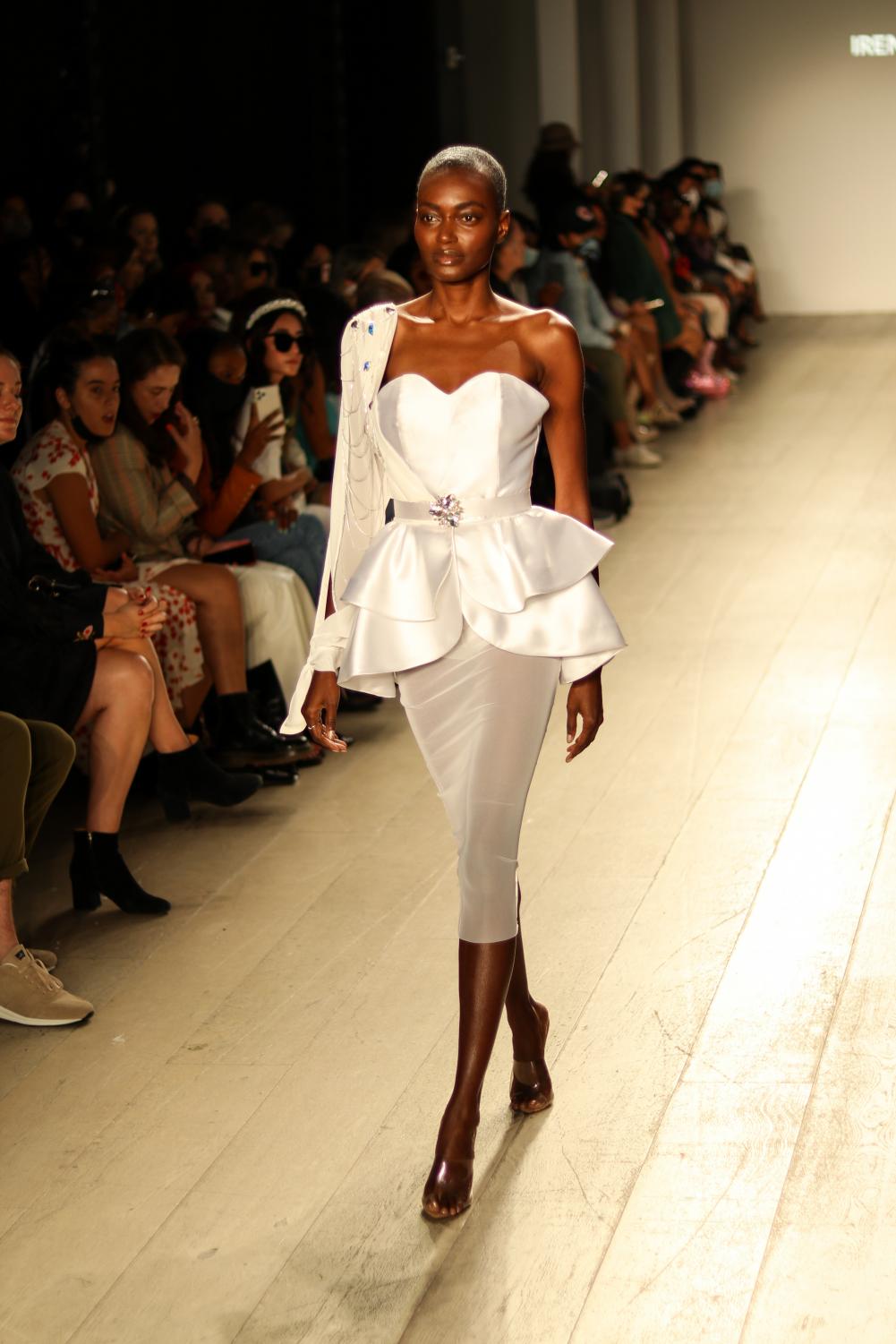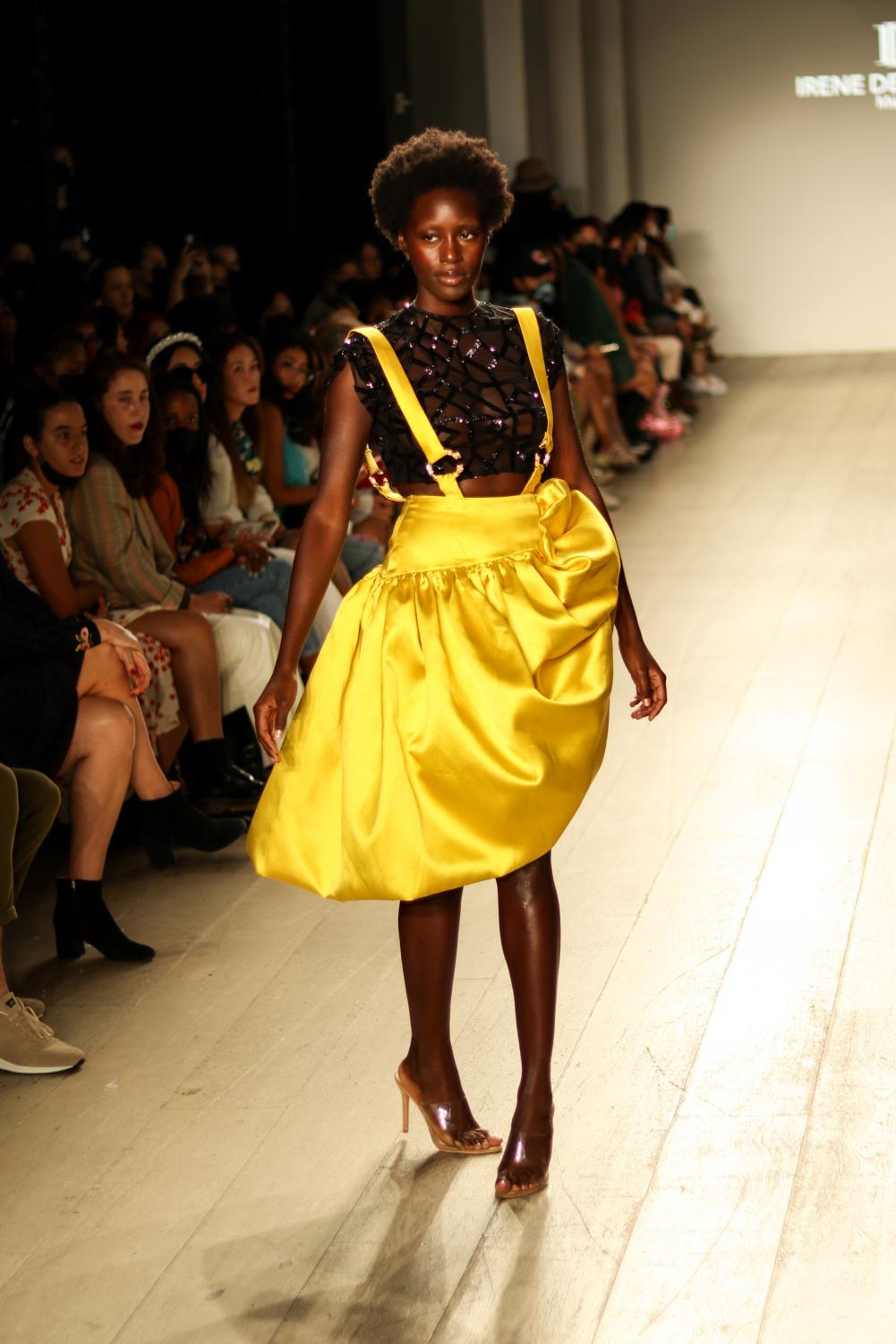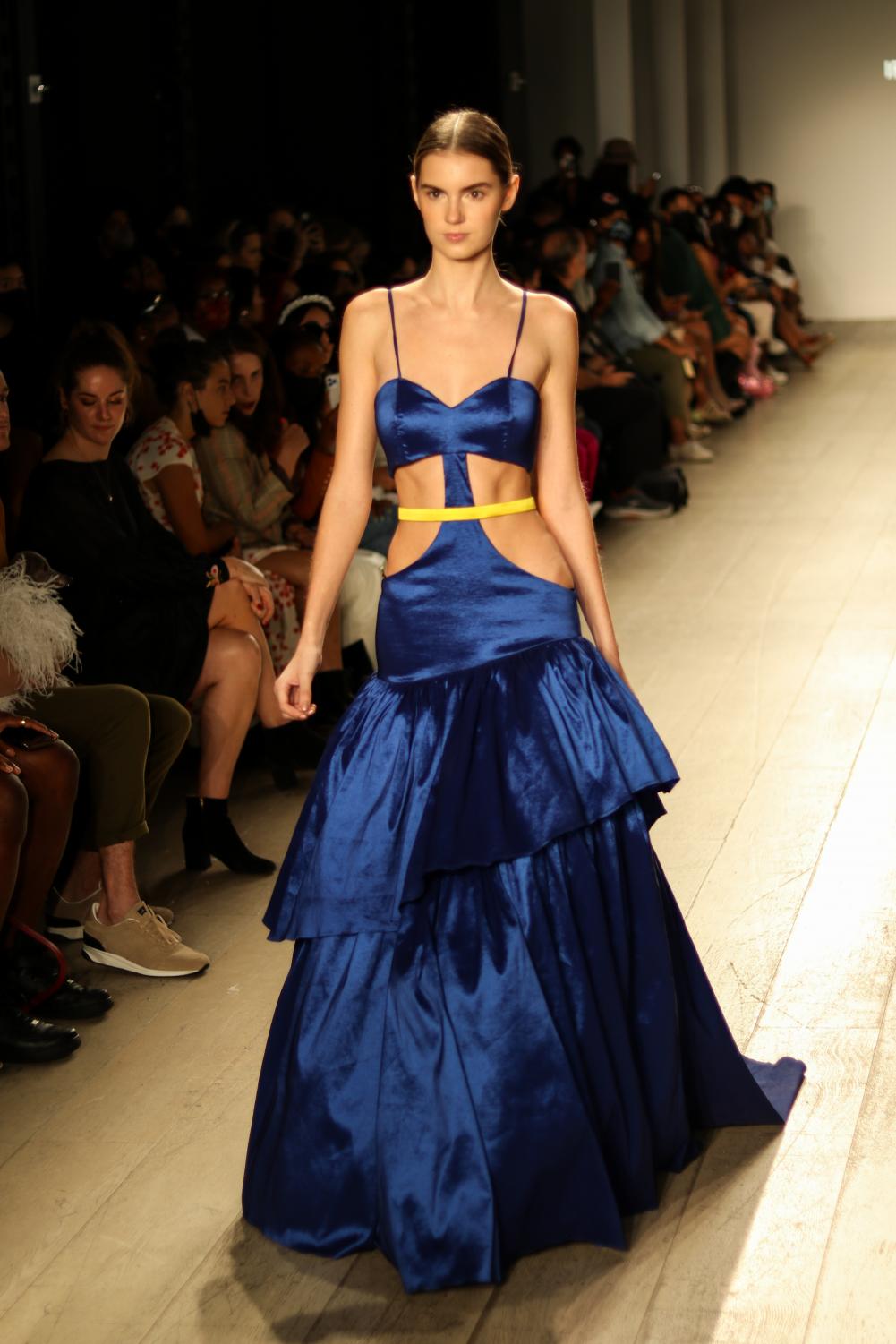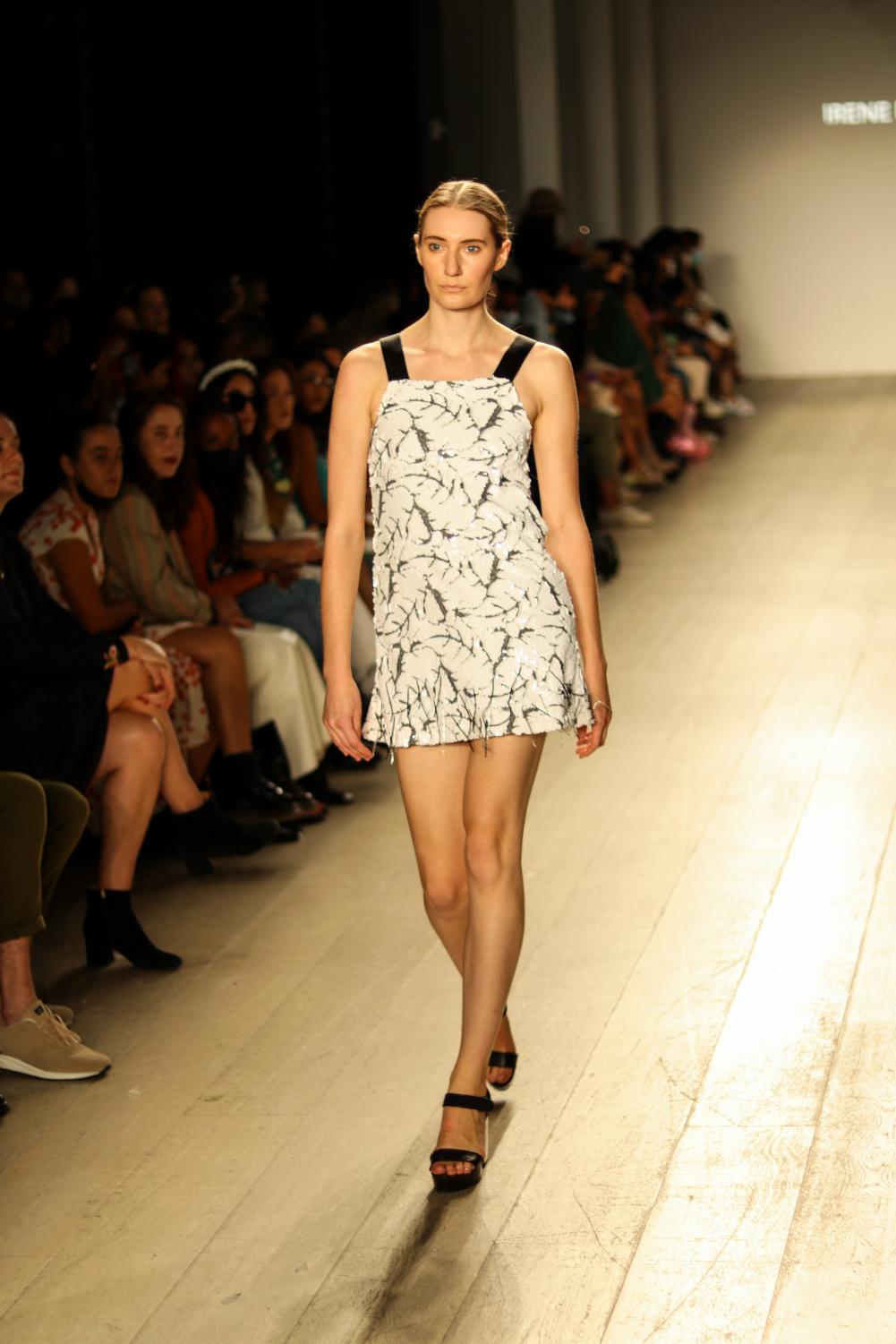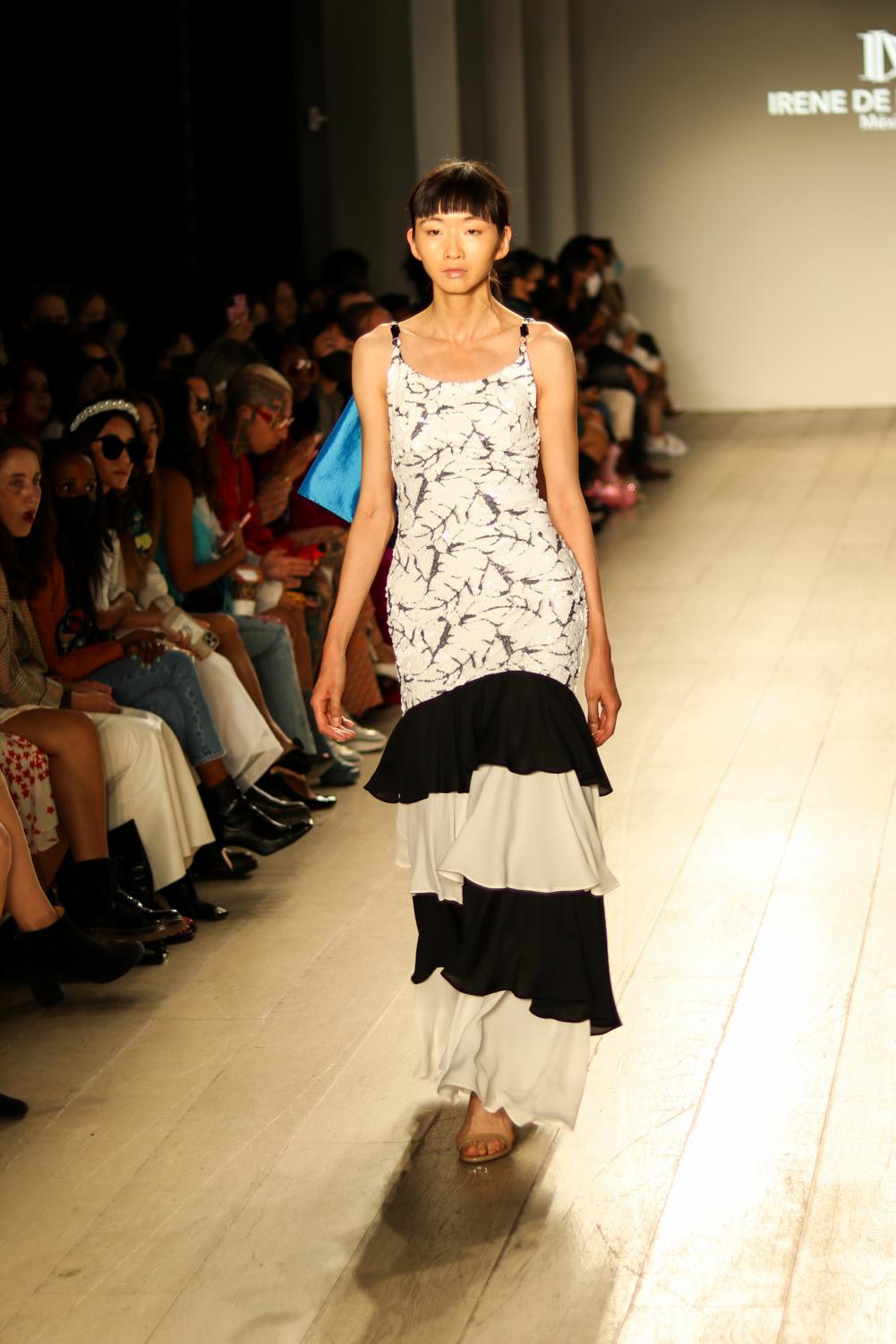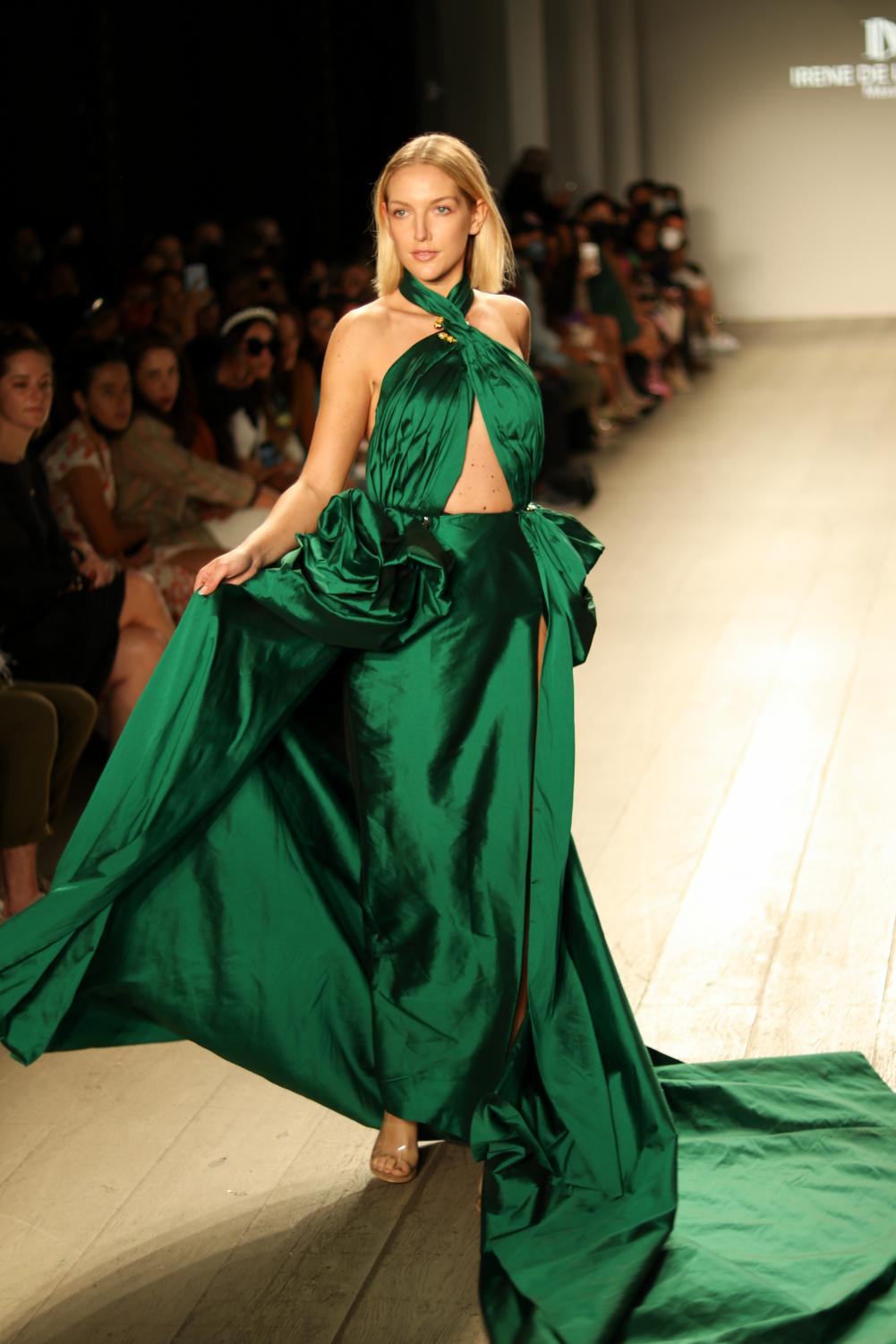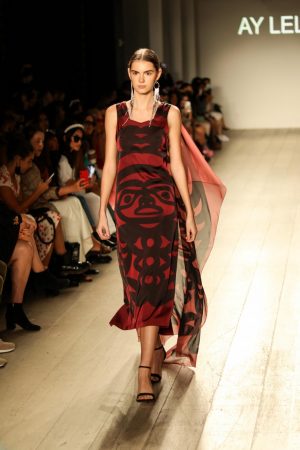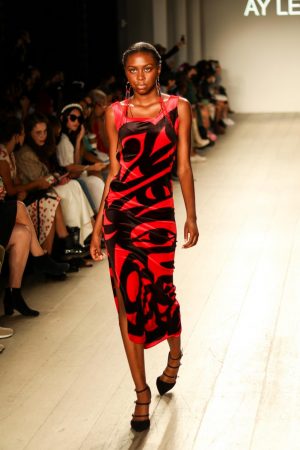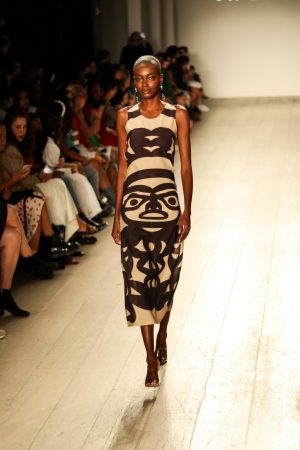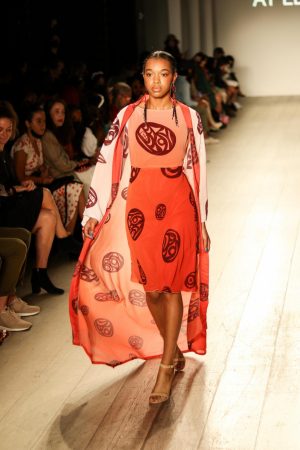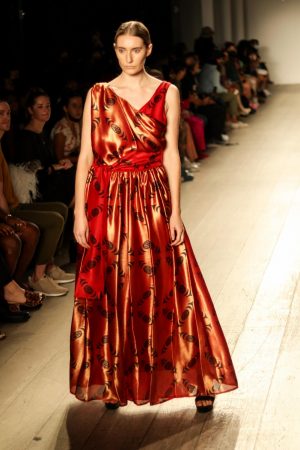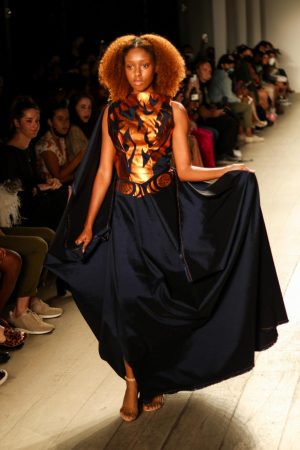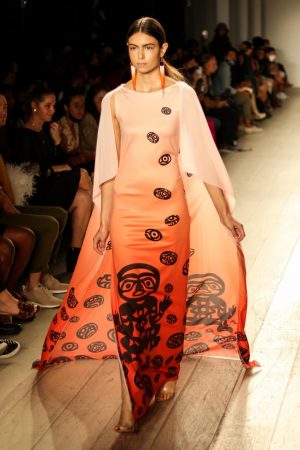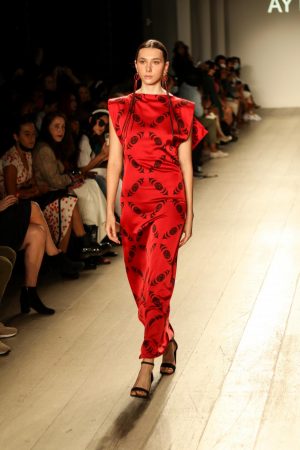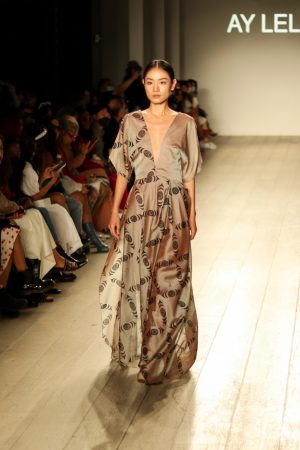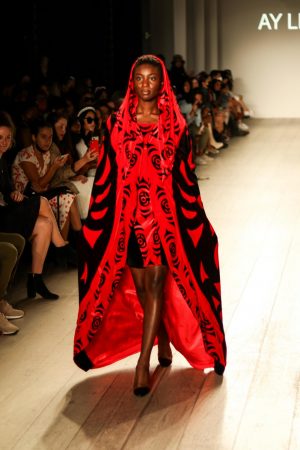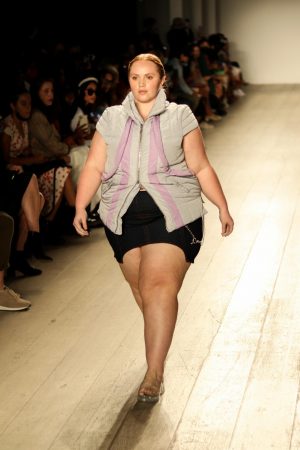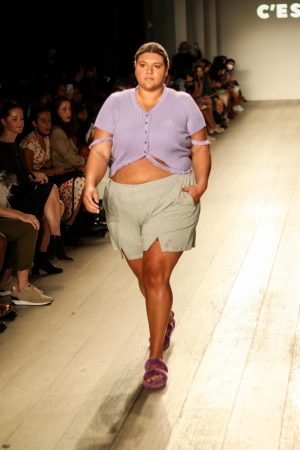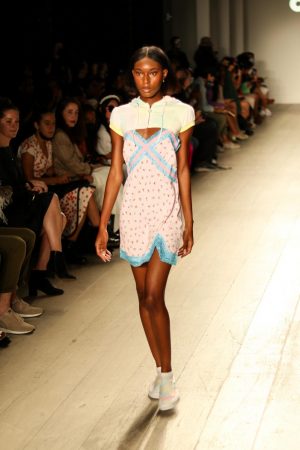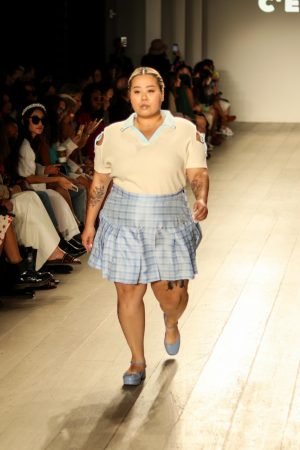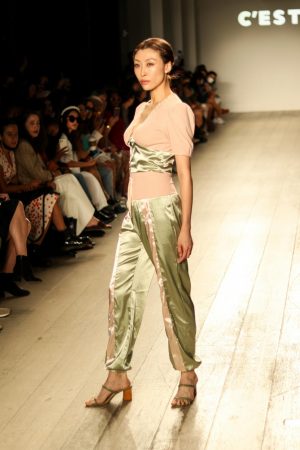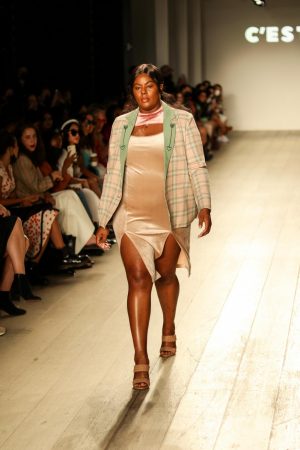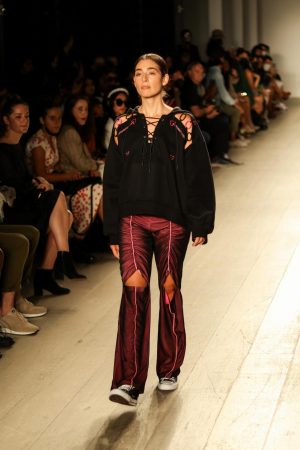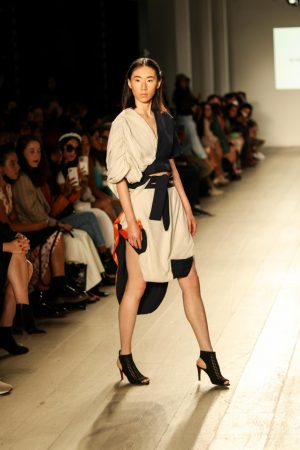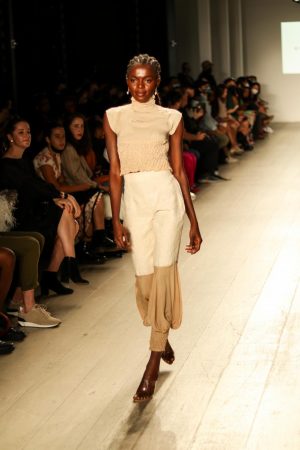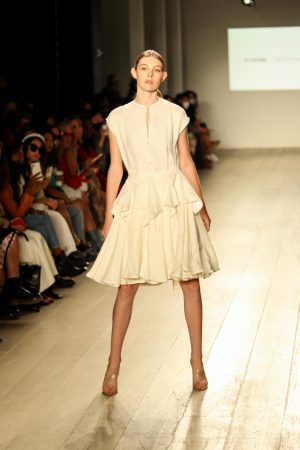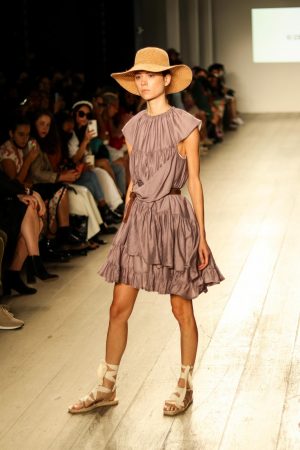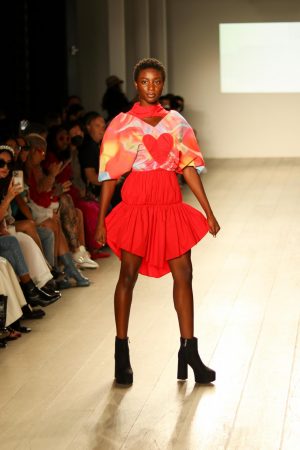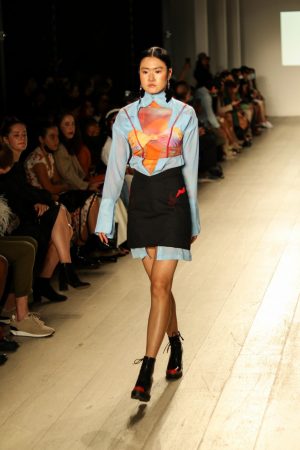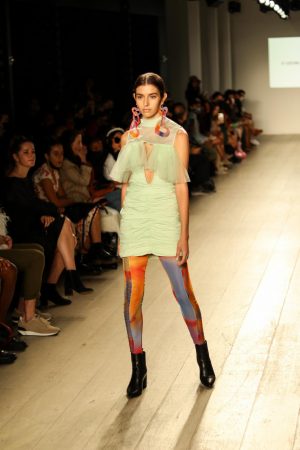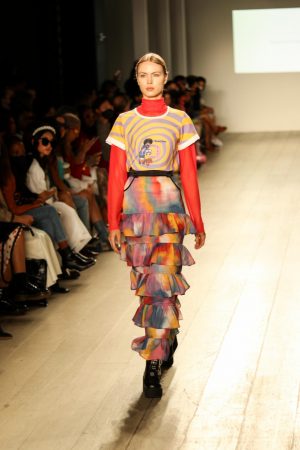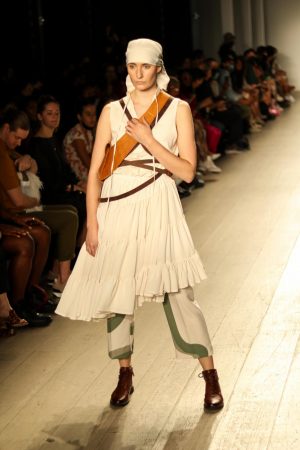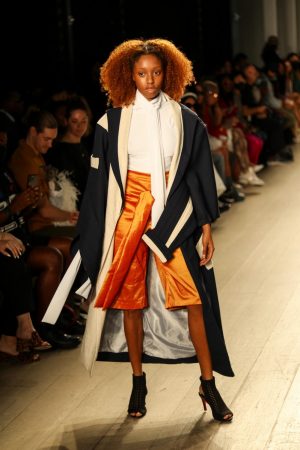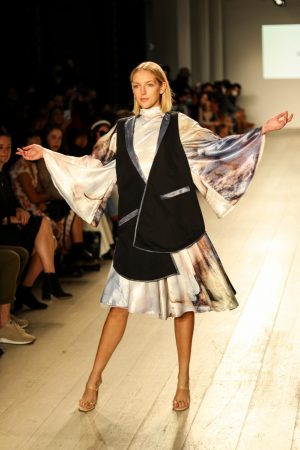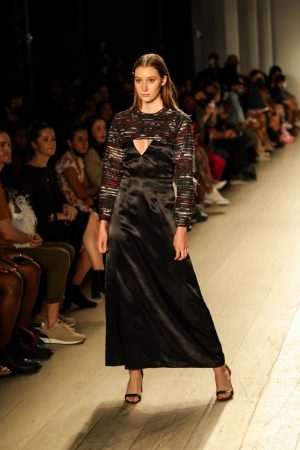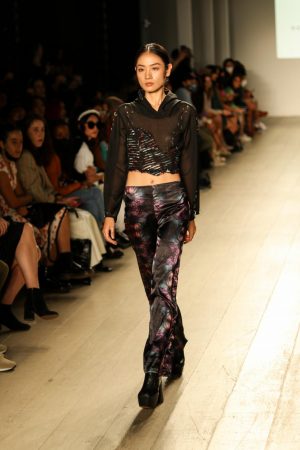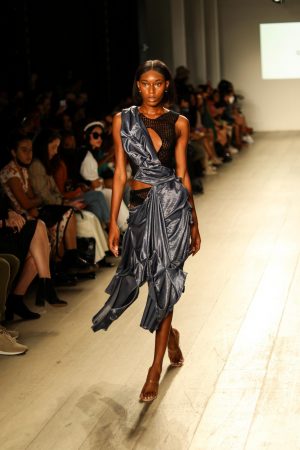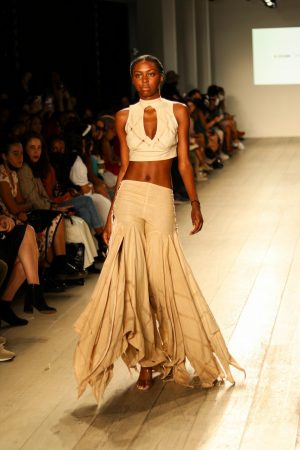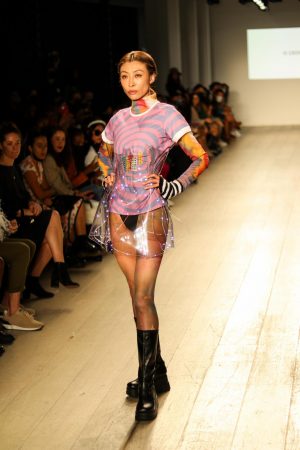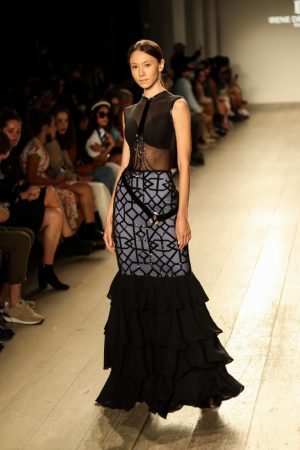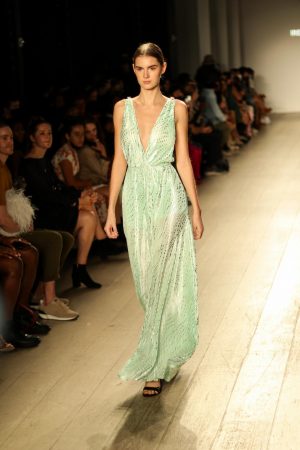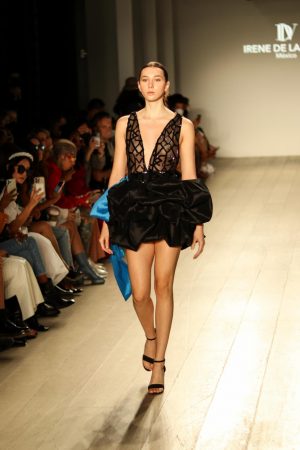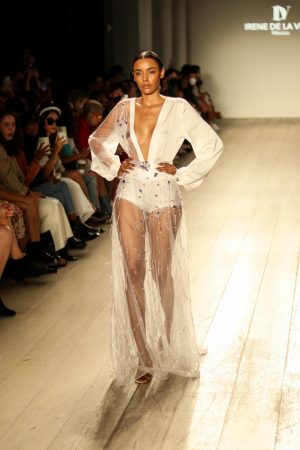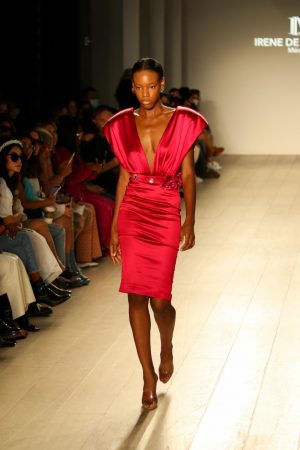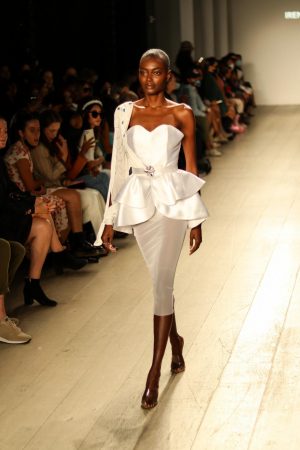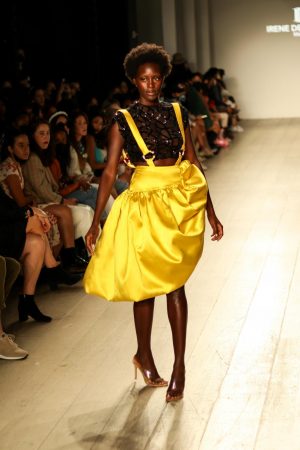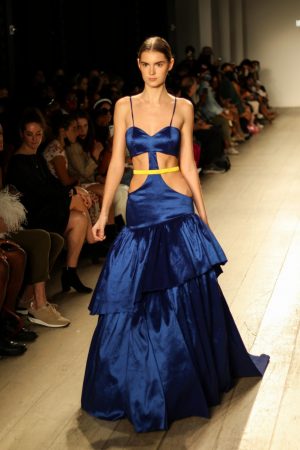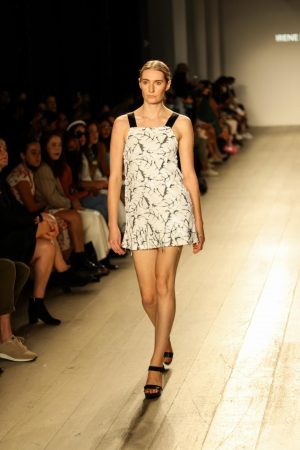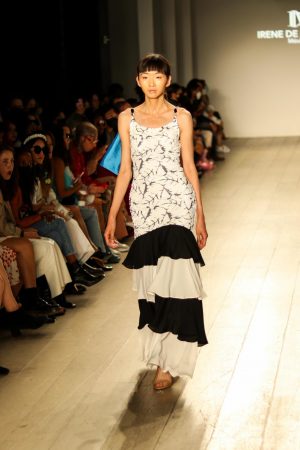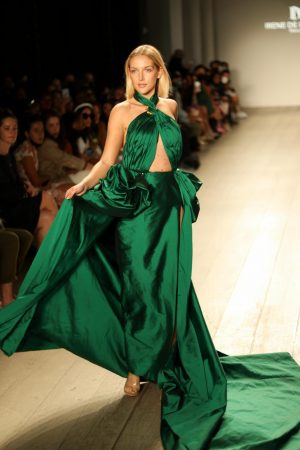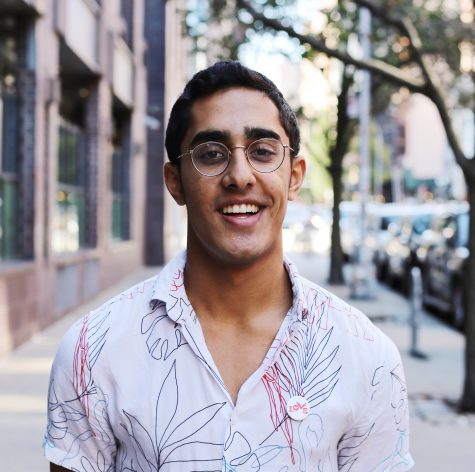Naked purple metallic cultural significance, anyone?
September 14, 2021
Global Collective, a label comprising emerging designers from around the world, hosted their Spring/Summer 2022 fashion show at New York Fashion Week on Sept. 11. The collective aims to spotlight designers in the fashion capitals of the world, and their NYFW show this year featured designers from North American countries such as Canada, Mexico and the United States.
British Columbia-based designer Ay Lelum — comprising first-nation design duo Aunalee Boyd-Good and Sophia Seward-Good — opened the show in a striking manner. A video of cascading waves was projected onto the wall, transporting the audience to the landscape of British Columbia. The first outfit was a silky metallic midi dress with a deep plunge and center slit; patterned with traditional Coast Salish family art, it was bold and striking. The pieces were rich: solid colors were juxtaposed with rich black patterns, putting a twist on a standard elegant dress and turning it into wearable art.
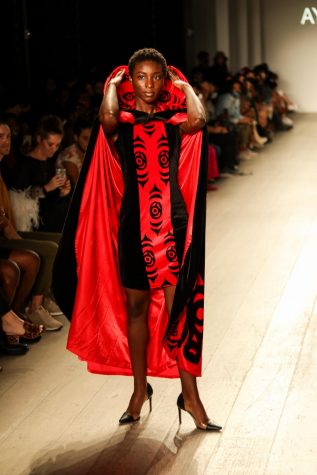
The majority of Lelum’s designs in this show were very commercial, but in the best way possible. It is easy to envision the garments lining the racks of Bergdorf Goodman or Saks Fifth Avenue. The closing look was sensational — a red-and-black velvet mini dress with a hooded floor-length cloak on top; the outfit took the idea of wearable art to the next level since you could almost hang the cloak on the wall as a tapestry. A breath of fresh air in a Eurocentric fashion world, Ay Lelum should become a household designer name.
The C’EST D fashion collection by New York City-based designer Doyeon Yoni Yu has always emphasized body positivity and size inclusivity as a cornerstone of their brand, and it was on full display at Global Collective’s show. Each model that graced the runway was unlike another — whether in height, stature or race — Yu achieved diversity in her casting. What wasn’t achieved was the execution of the pieces.
Utilizing strong springtime pastel colors, Yu turned the runway into an easter egg basket; while the colors made the designs fun, the designs themselves fell flat. The opening outfit, a mint lilac puffer with a black skirt, was unconvincing, albeit colorful and charming; the puffer was awkwardly half-undone and the skirt looked as if it were going to slip up. Look two had a fun lilac button top with shoulder detailing, but it was paired with heather grey shorts that looked more like pajama pants than anything you would wear out. All in all, Yu’s pieces were clumsily styled. C’EST D definitely has potential as a brand, but it must figure out its styling if they really want their garments to shine.
The next collection reeked of design school. Bold, beautiful and odd, some outfits worked, but others fell flat. Monterrey-based design school CEDIM showcased a design collection by four different students. The runway show varied greatly in content, ranging from a PVC plastic light skirt to an eggplant prairie dress. It felt like a hodgepodge of designs; but that was the joy of it. CEDIM — specifically Alexia Garro — wore the only garment at which the audience gasped. Garro designed a truly showstopping piece; she appeared on the runway partially nude with one of her breasts accented with blue piping and black tulle, hanging out of a deconstructed corset. It is a piece so divisive that you couldn’t help but love it.
Irene De La Vega was the last designer to show. She presented evening wear. Her designs were fashionable, incorporating asymmetrical puffy skirt bottoms and sheer organza with feathers; but they lacked the luxury appeal sought by many evening wear shoppers, who want to feel like a million bucks. De La Vega’s designs don’t exude that energy. Instead, they’re a hip twist on evening wear — something an edgy 20-year-old would wear for a night out.
As cool as the designers are, however, what’s not cool is sloppy construction. A blue dress with cutouts on the hips had black torso straps hanging out on one side. It could have been a styling error, but it begs questions about the designer’s attention to detail. It seemed as if De La Vega was focused on the big picture of her designs to the detriment of the finishes, which make evening wear shine.
All in all, Global Collective showcased a diverse range of designers in only 40 minutes; each brought new elements to the table. But while new talent always has the freshest eyes, the show’s inconsistencies no doubt left many viewers with questions about the quality of the collections.
Contact Nic Leblanc at [email protected].























































































































































